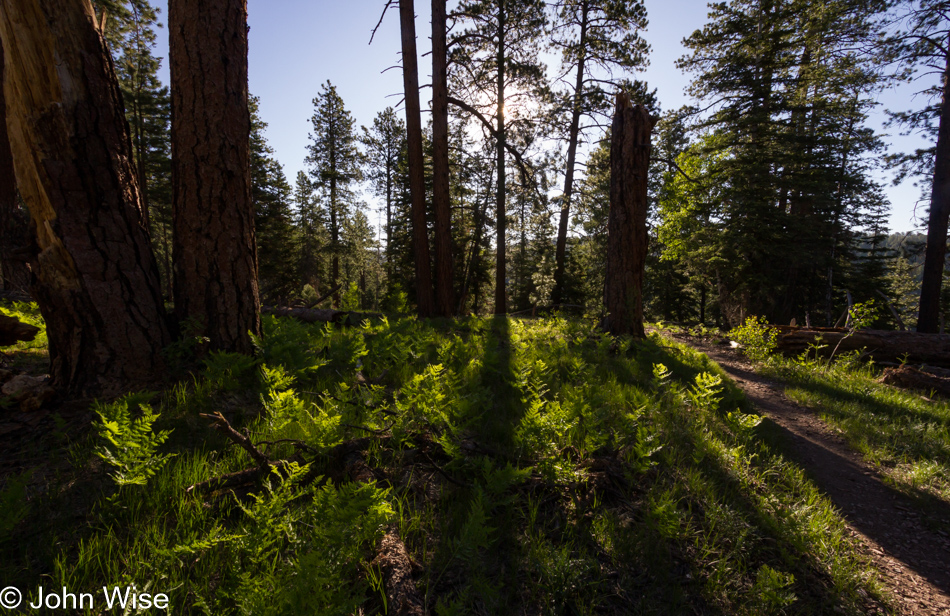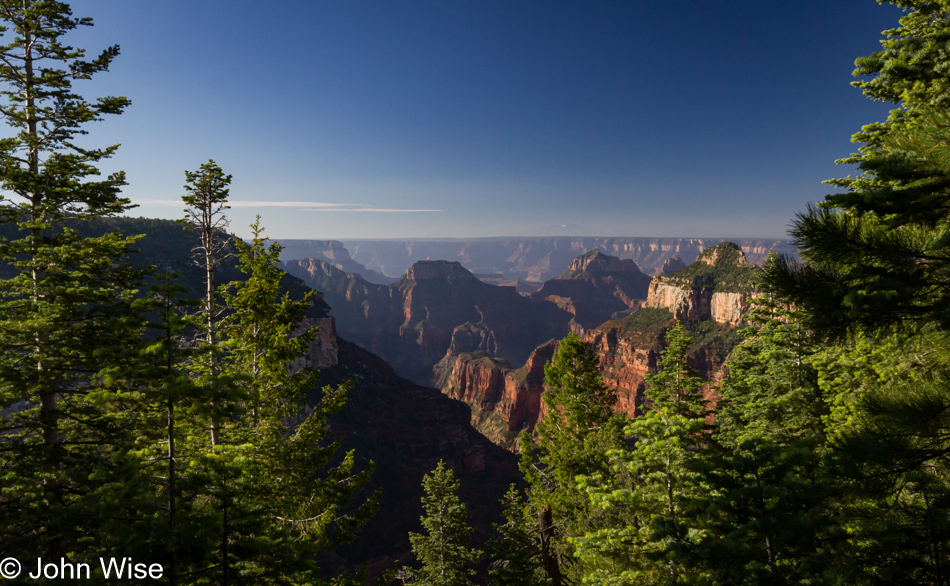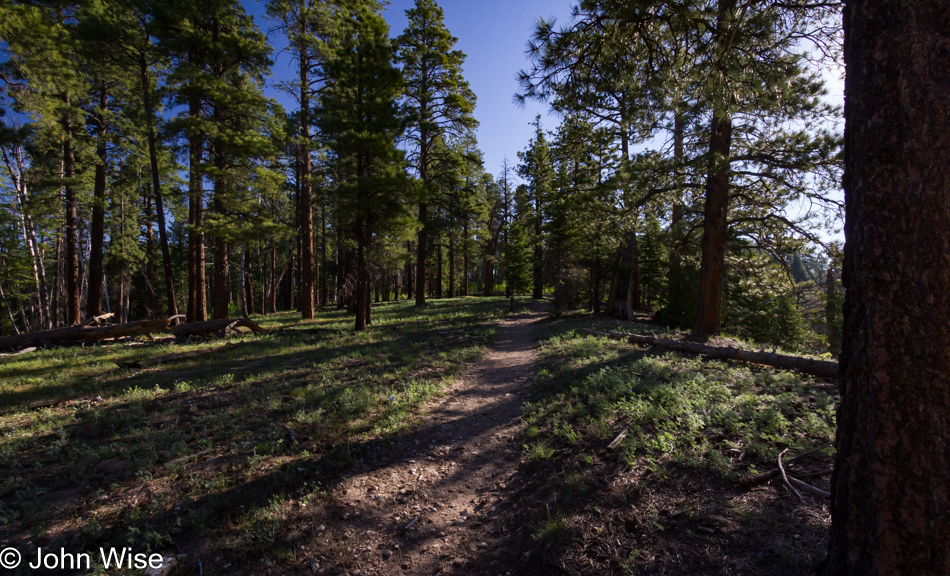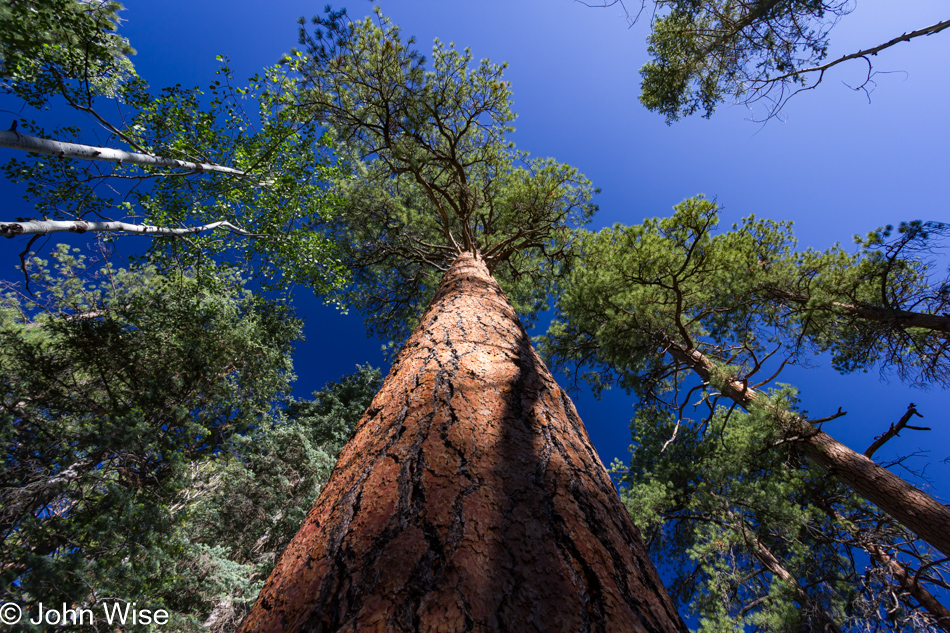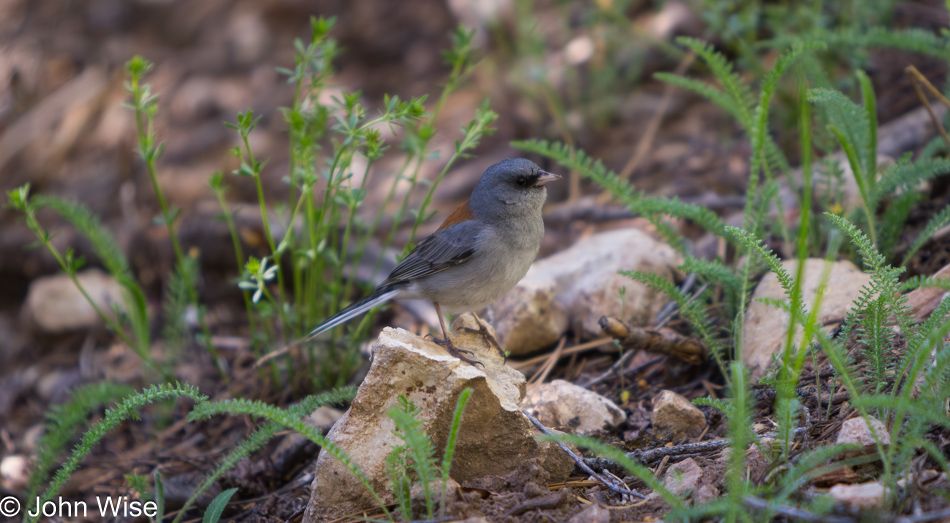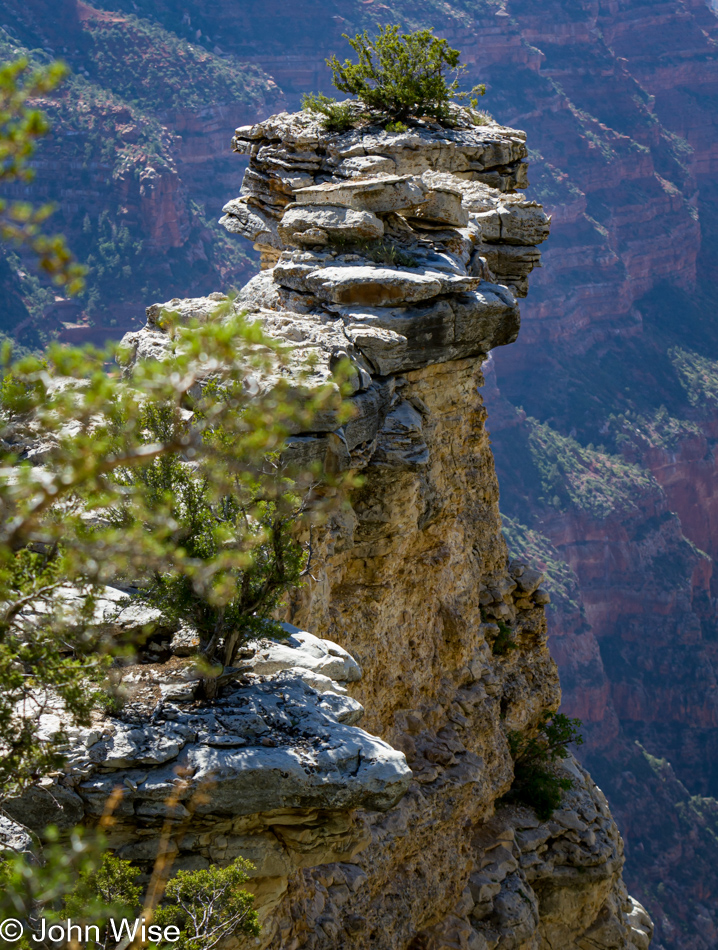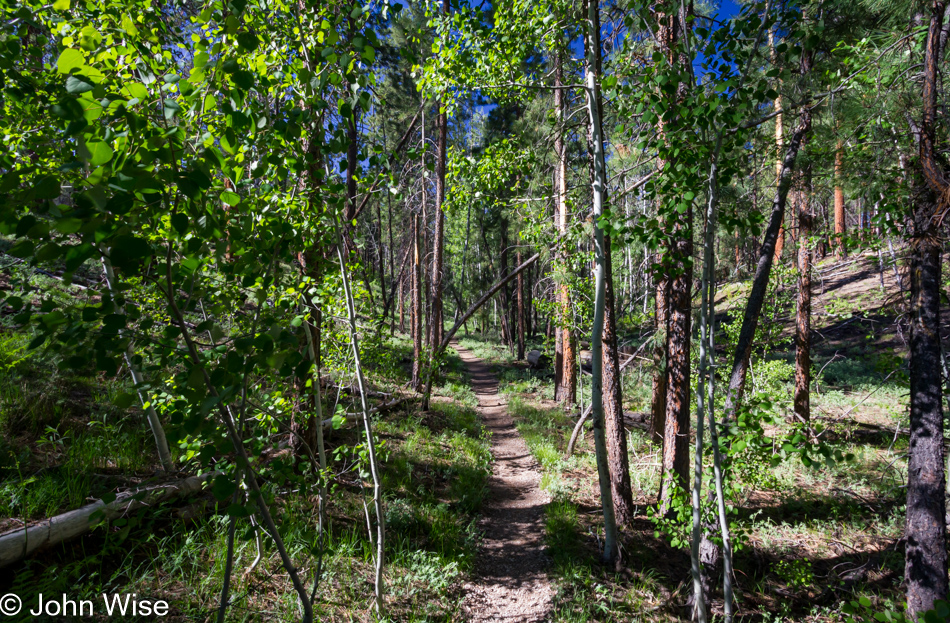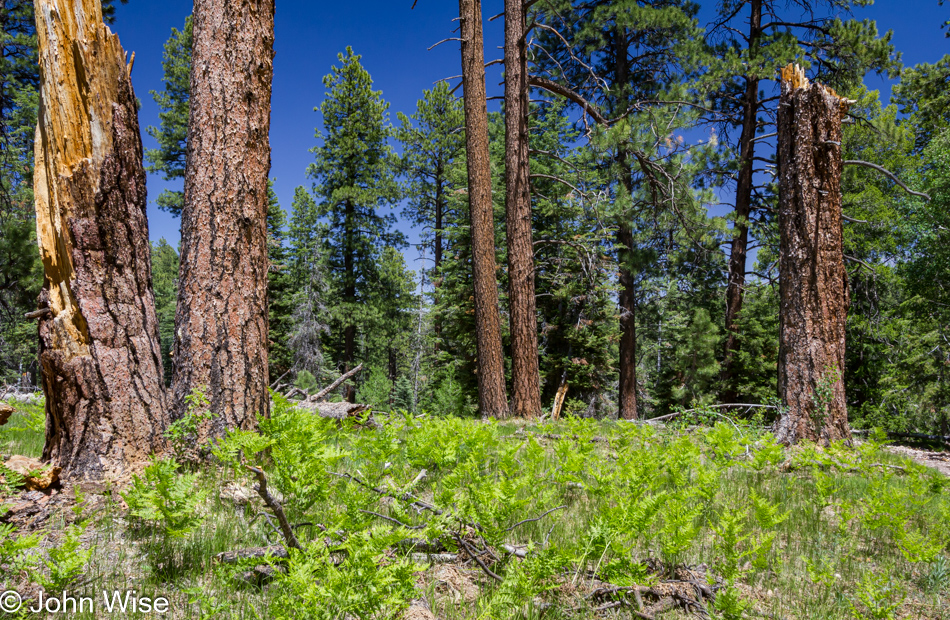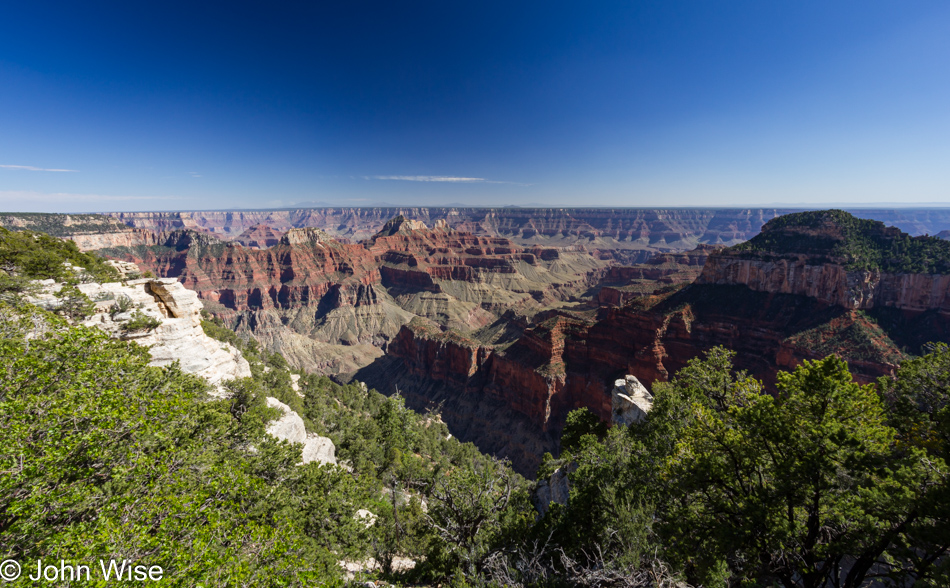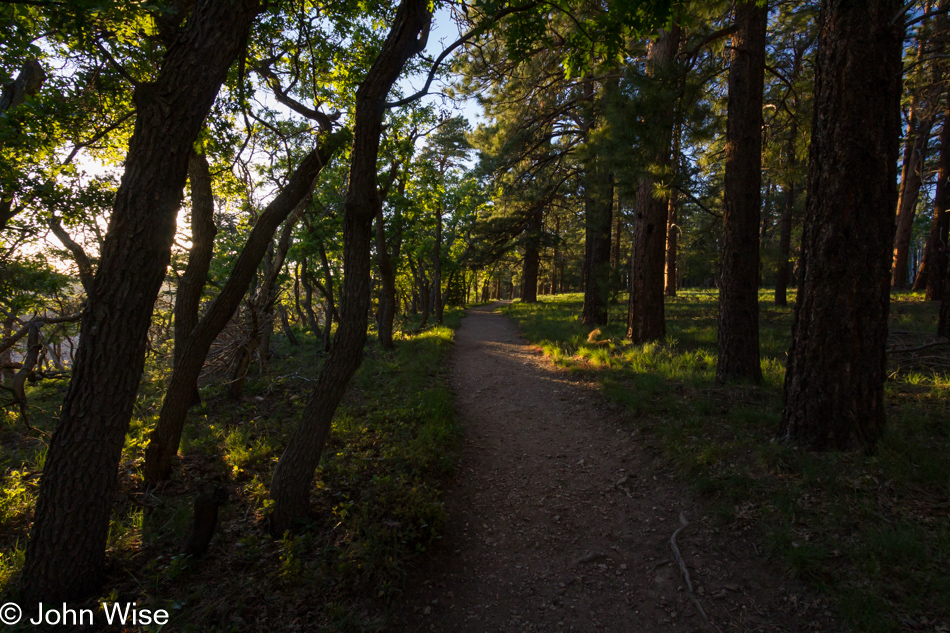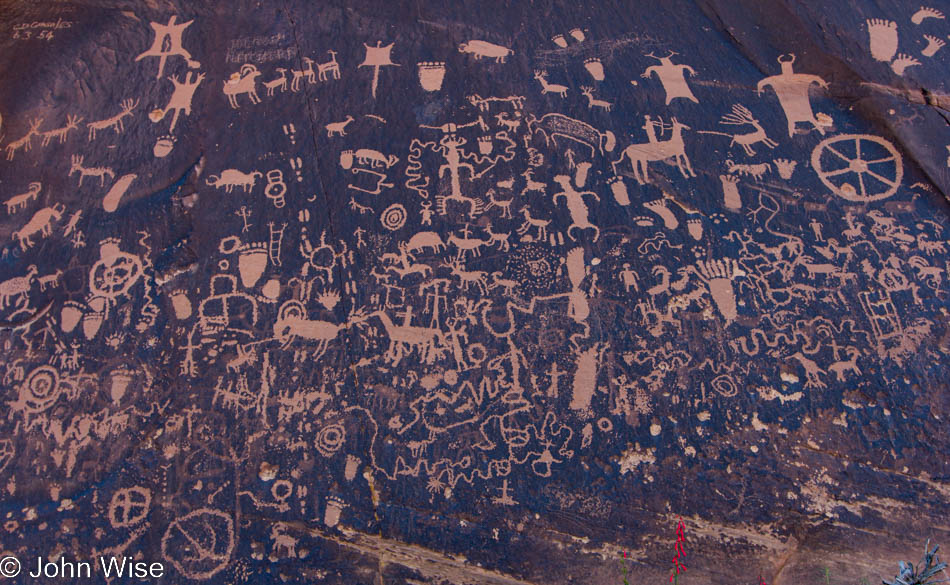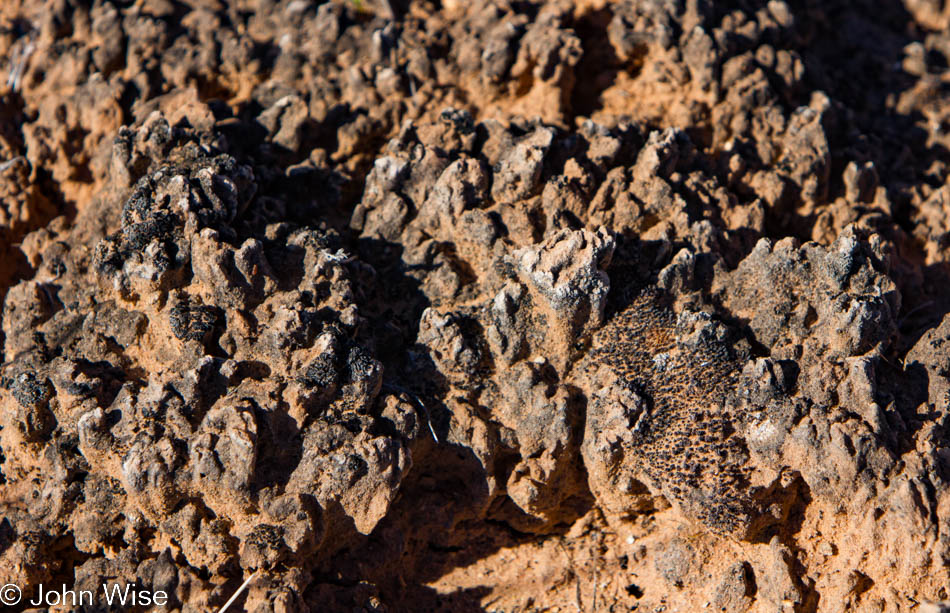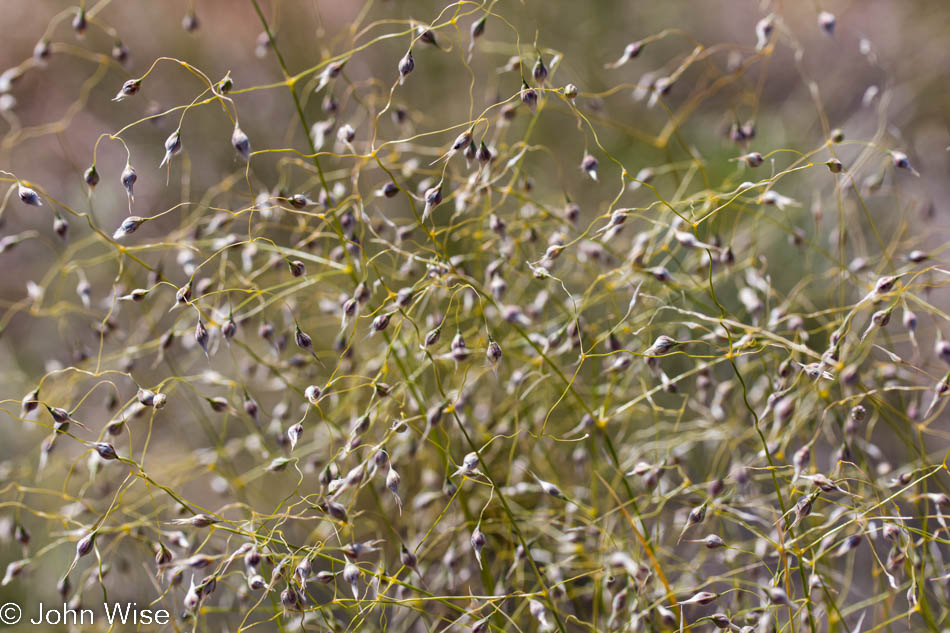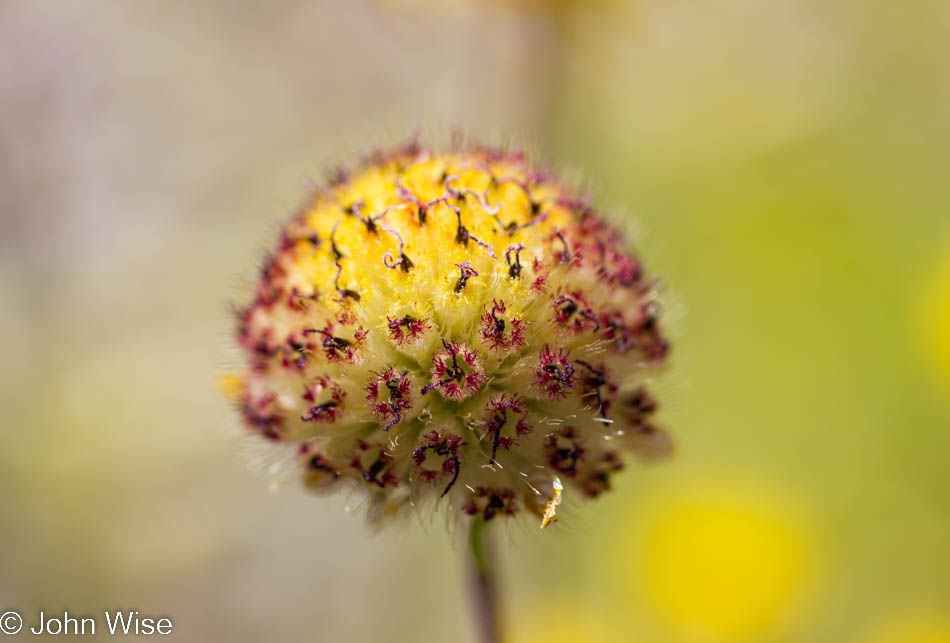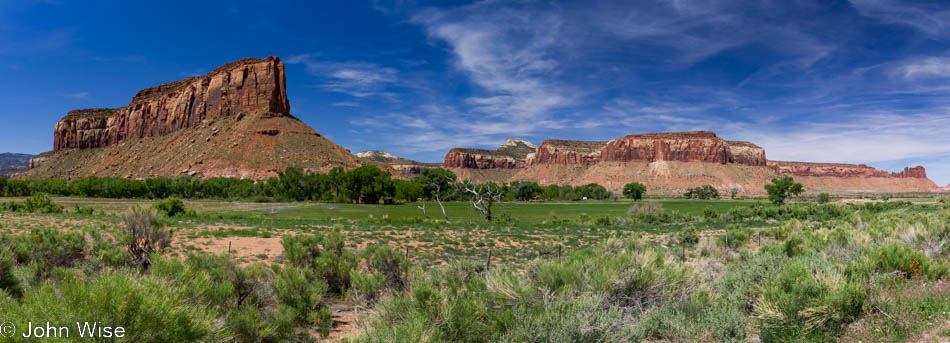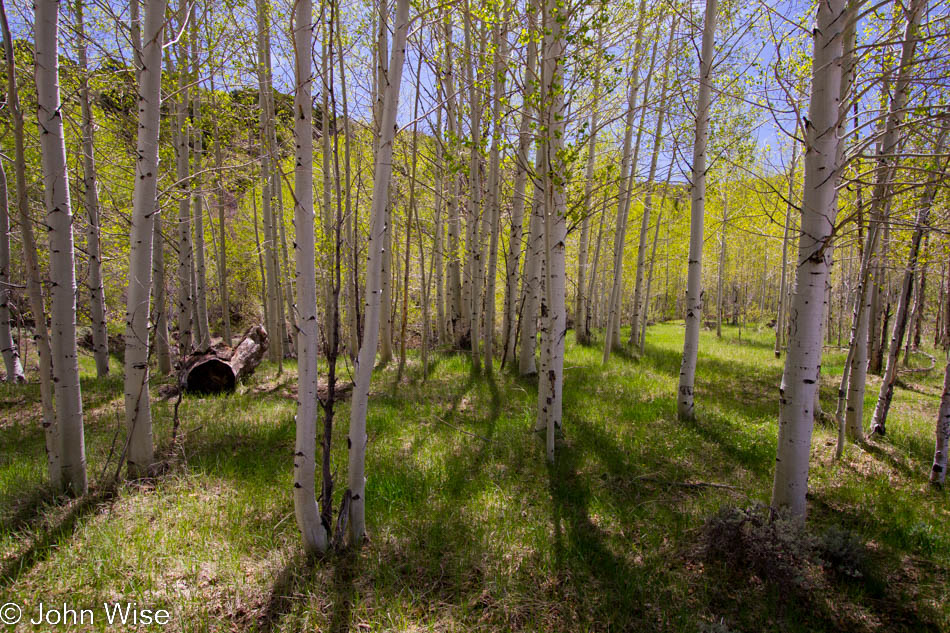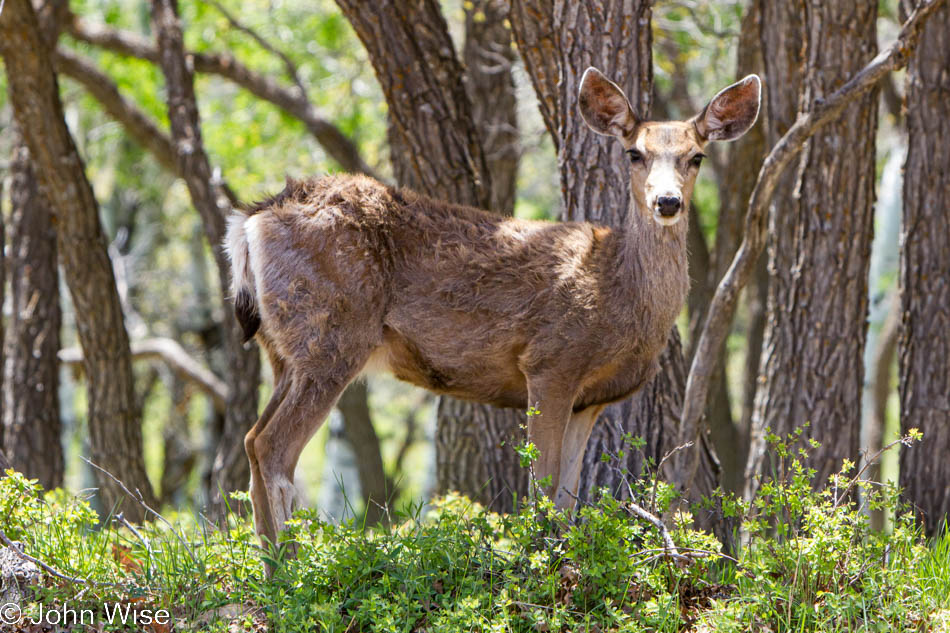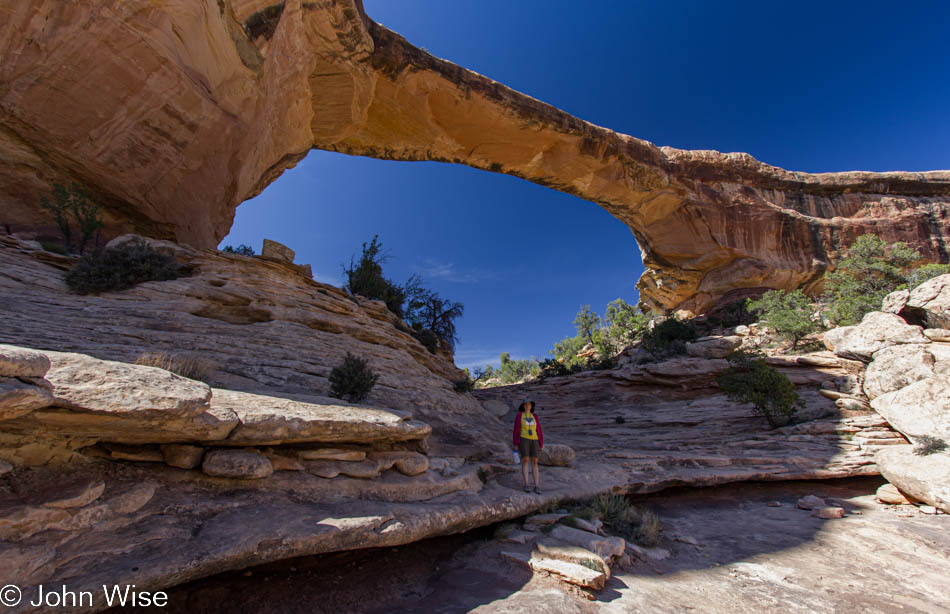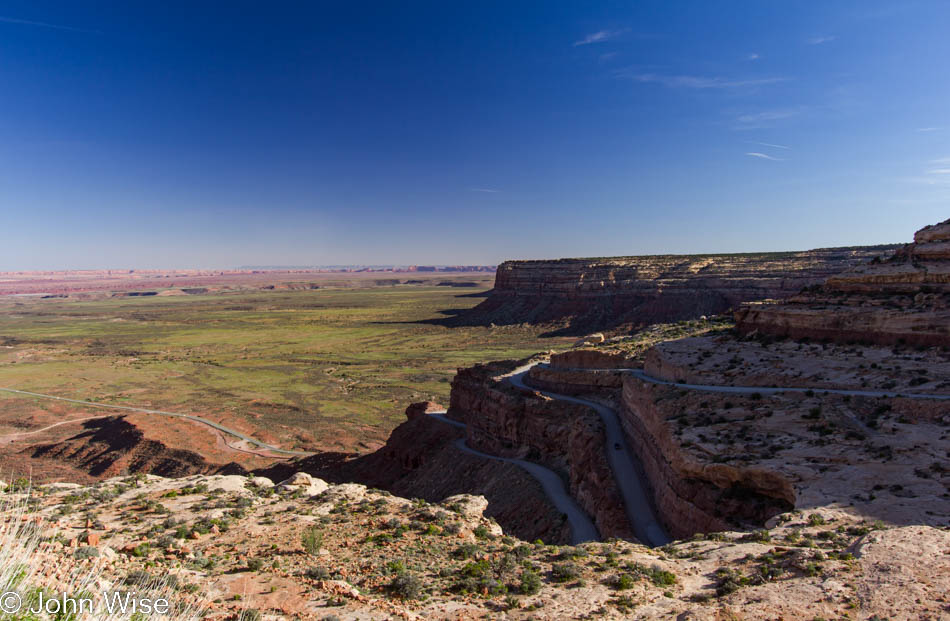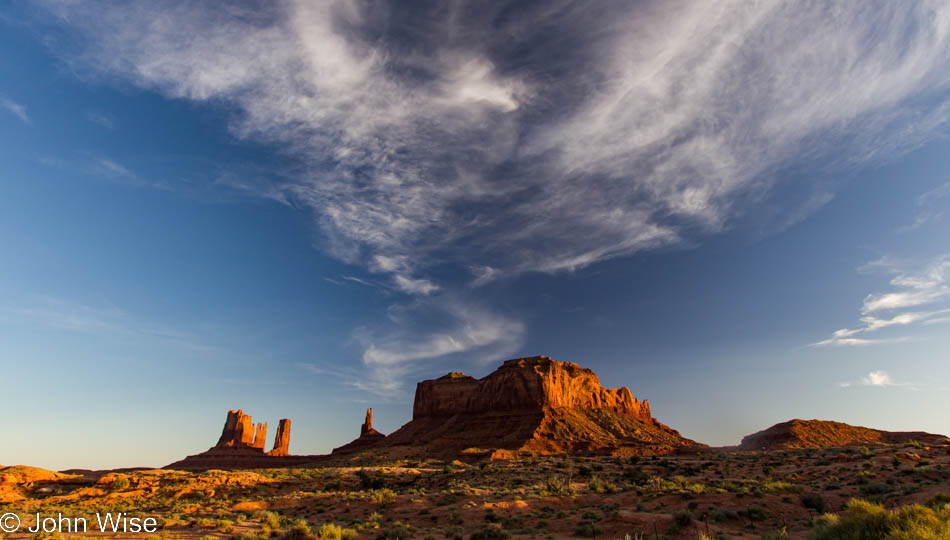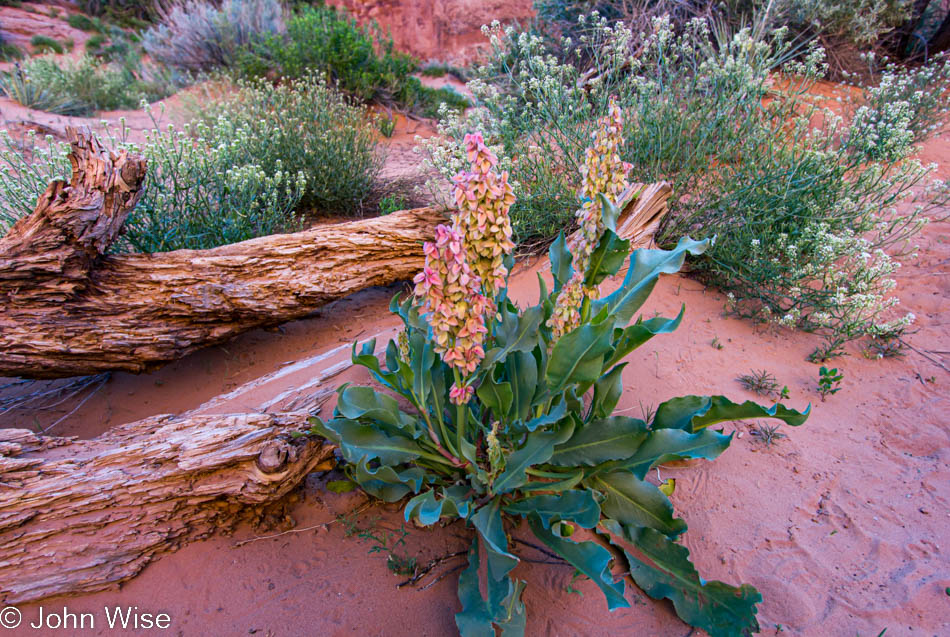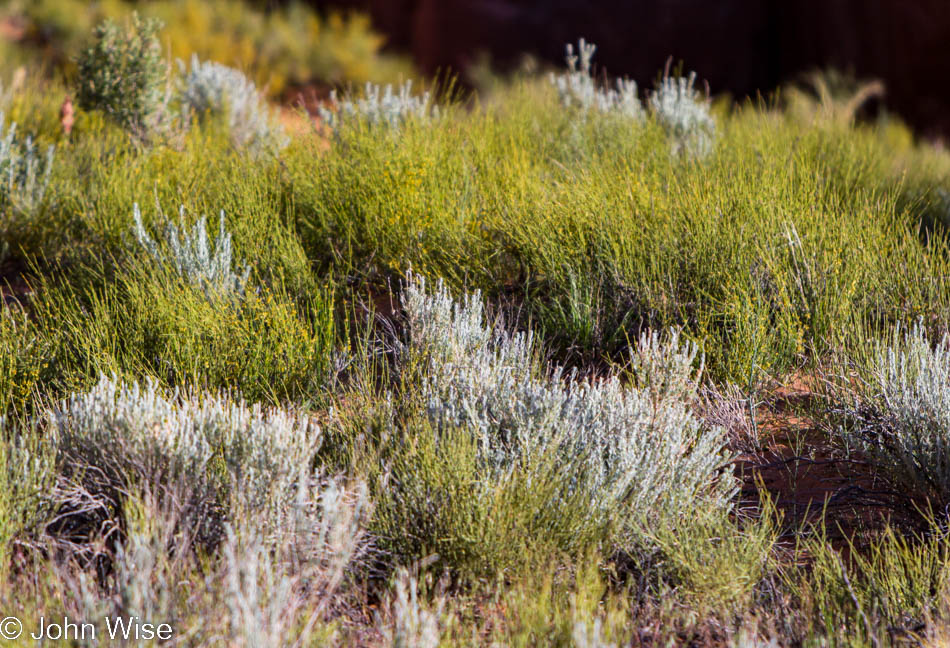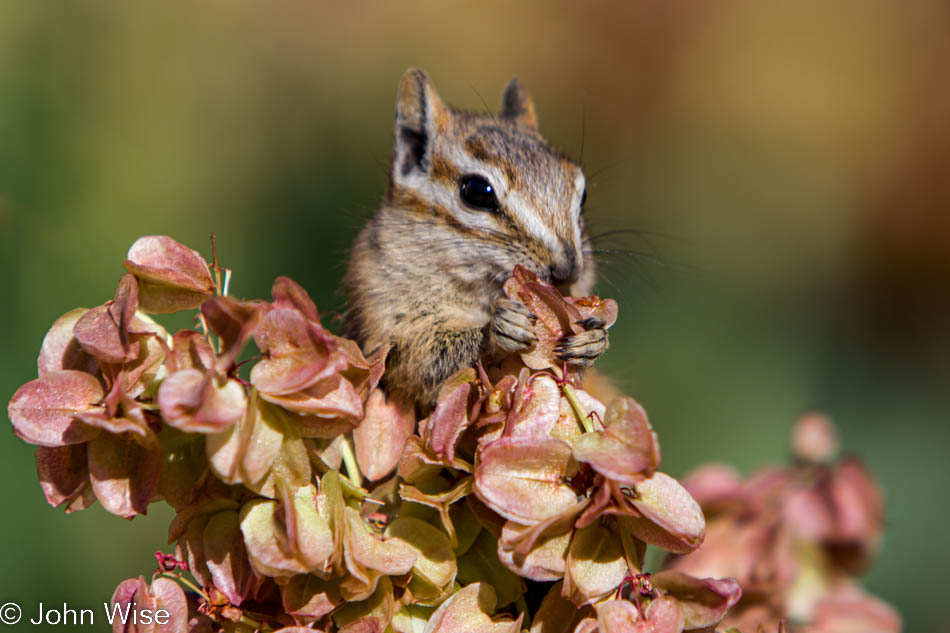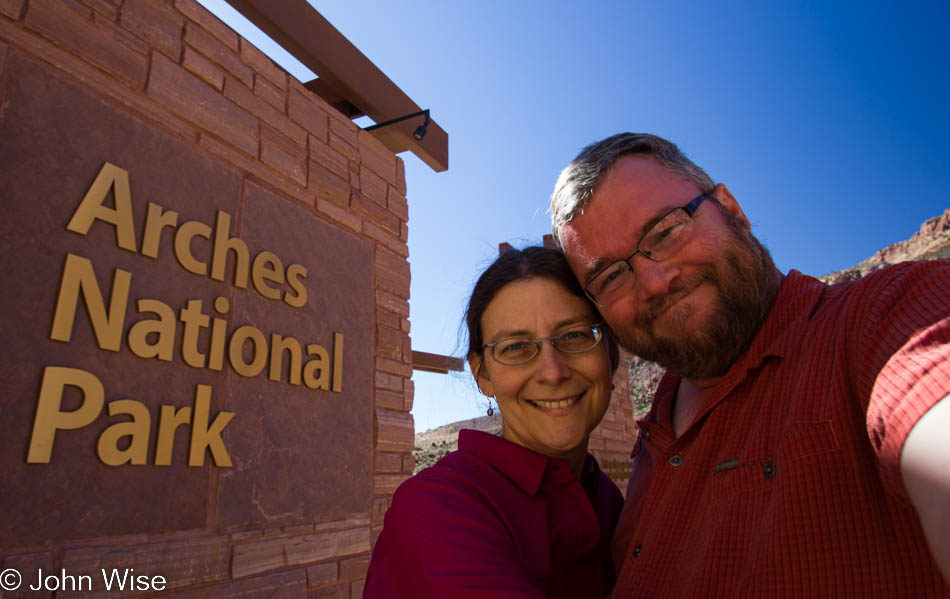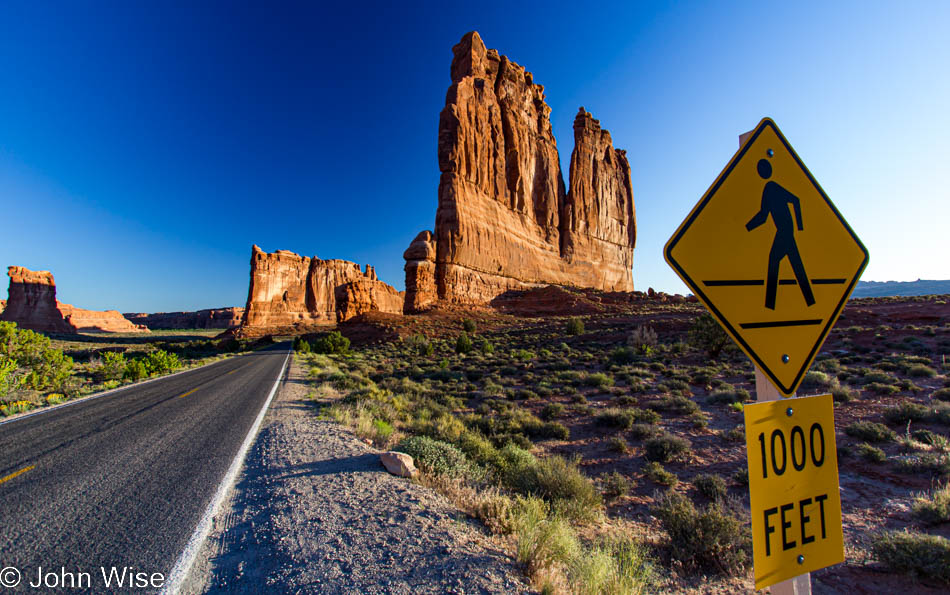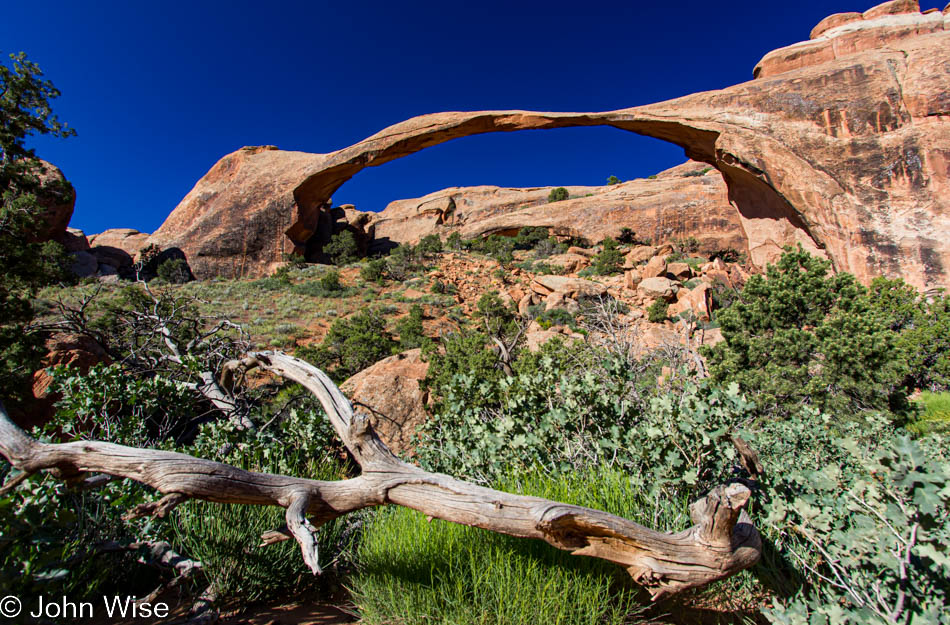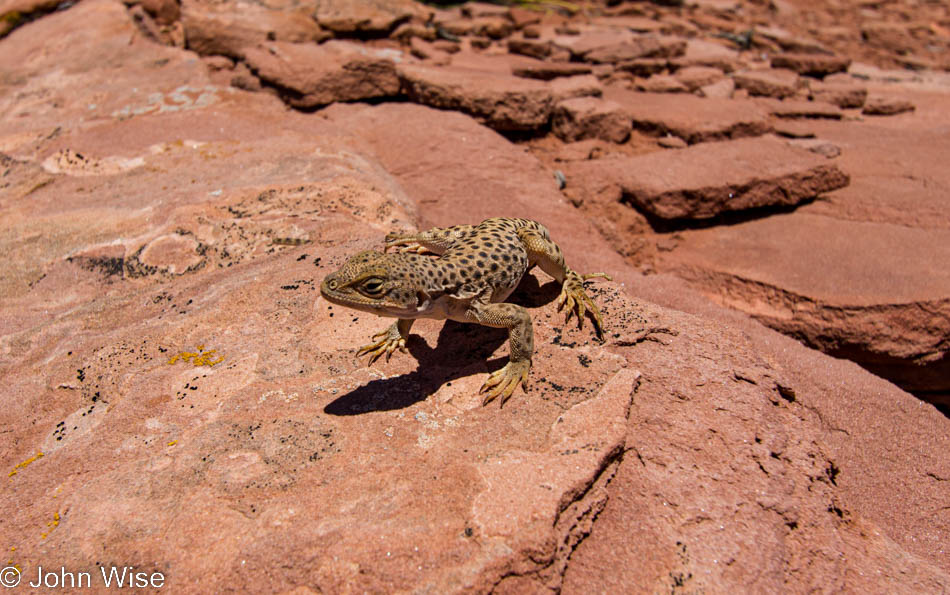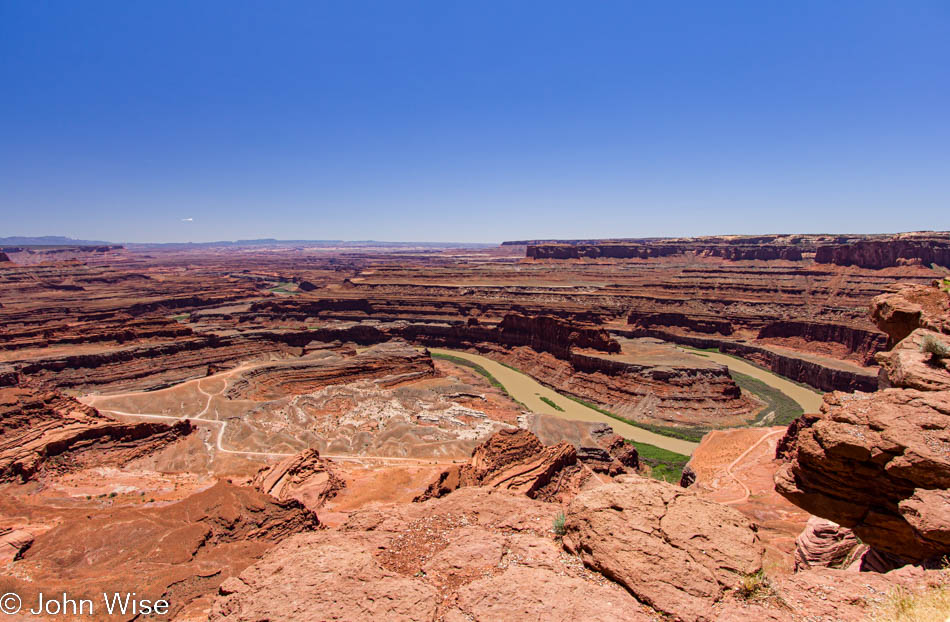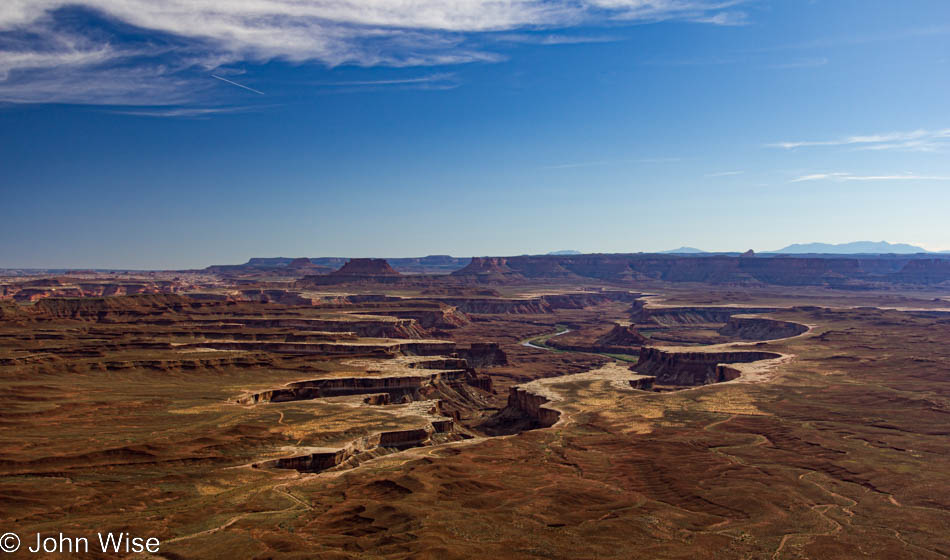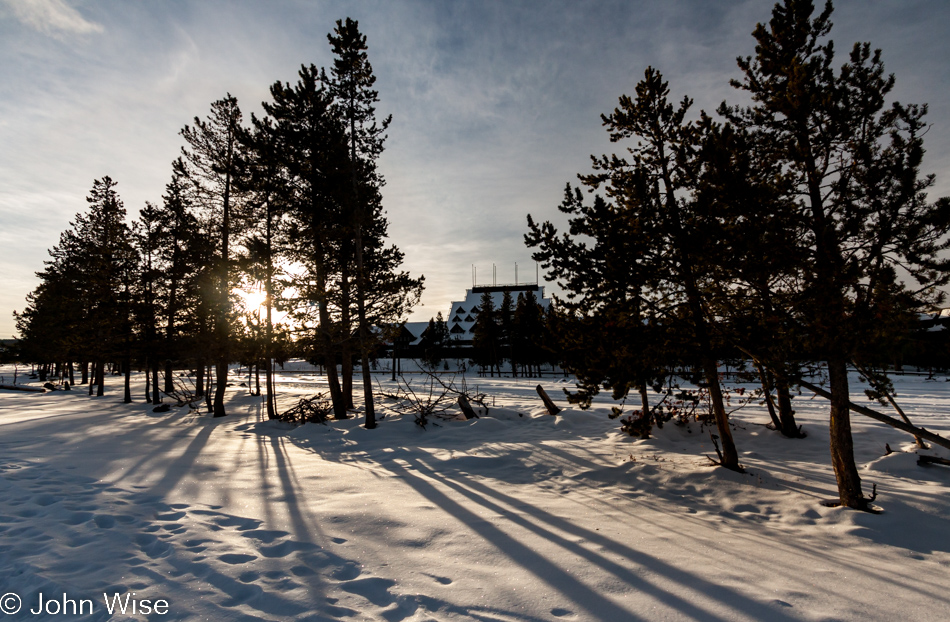
What a day, all day. Caroline and I met 21 years ago, and on this anniversary day, Caroline became a Junior Ranger – another reason going forward to celebrate January 17. We enjoyed two tours this day, one to the Firehole Basin in the afternoon, and later in the evening, we ventured into the dark on the Stars & Steam tour. It all started by leaving our cabin at Snow Lodge just before sunrise. From beginning to end, we had, you guessed it, a perfect day.
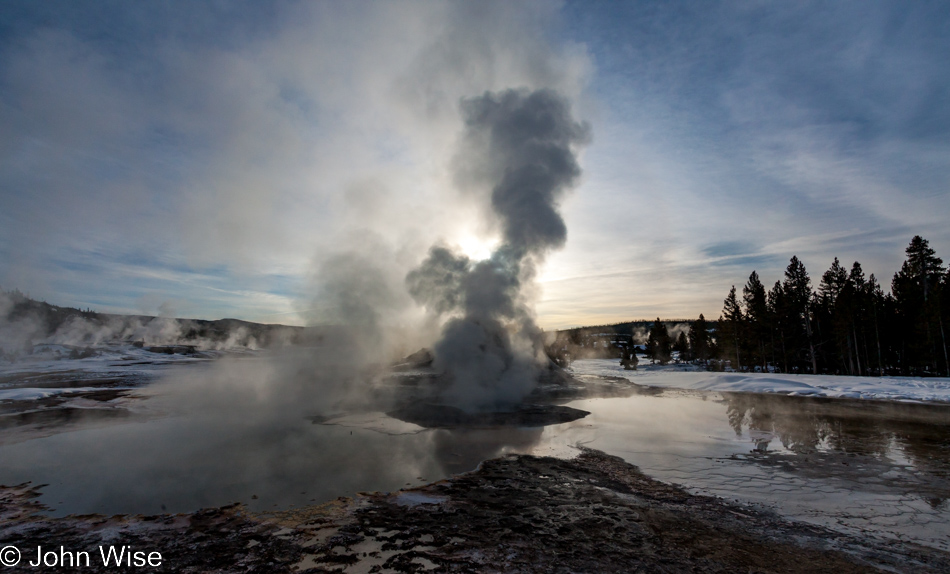
Beelining towards the bicycle path, we stopped briefly to tip a nod to the end of an eruption of Old Faithful. The closed Old Faithful Inn stands silent and majestic; fond are our memories of room #225, where we have put our heads to rest on more than one visit to our favorite hotel on earth. On the bicycle path, we are soon to turn left towards Daisy Geyser, but take a minute to stop and admire Castle Geyser with the rising sun directly behind the geyser cone and steam. Our pace is quick, with less than three hours to hike out to Black Sand Basin and back before grabbing a bite for lunch and joining our first guided tour at 12:45.
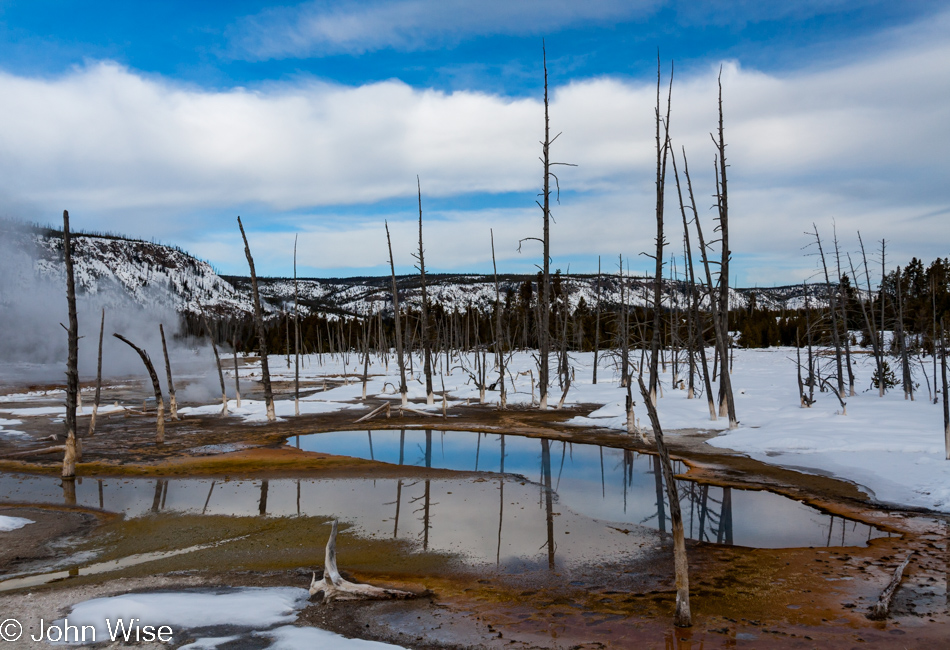
Racing toward Daisy, we noticed some geyser activity. We waited fifteen minutes for an eruption since all the conditions looked ripe, but it wasn’t budging – so we did. Up the boardwalk for a quick peek at Punch Bowl Spring, still as beautiful as ever. In the snow with our Yaktrax on, it took nearly an hour to trek the mile and a half to our destination. While this chicken crossed the road to Black Sand Basin, Caroline stayed over in the deeper snow to perform her first Junior Ranger task, measuring the temperature of snow at various depths. The air temperature was toasty in the low 40s, the top of the snow was in the mid-’20s, and near the ground, it was nearly 30 degrees Fahrenheit. It now makes sense why a small animal would be closer to the ground in an effort to remain warm.
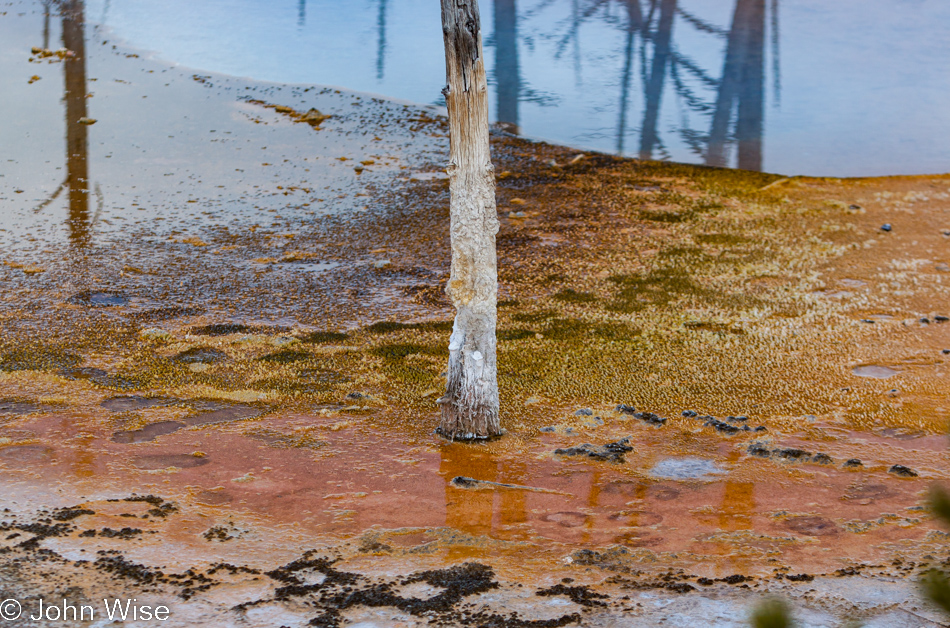
Waiting for my future Junior Ranger, I have some time to stand here at Opalescent Pool and admire the bobby sock trees. These white ankled, someday likely to be petrified, trees are attention arrestors. Prior to the 1950s, visitors would have seen healthy green lodgepole pine trees growing here. The pools surrounding these trees dried for a while, only to later see the area flooded with waters from nearby Sprouter Geyser delivering the silica that transformed these wooden monuments that are turning to stone. The surrounding bacteria mats are a rainbow of thermophilic growth, the various organisms adapted to life on the fringe of hostility and surviving in extremely hot waters – each with distinct colors that can almost be read like a thermometer with certain colored bacteria thriving in hotter waters and others requiring cooler but still warm water.
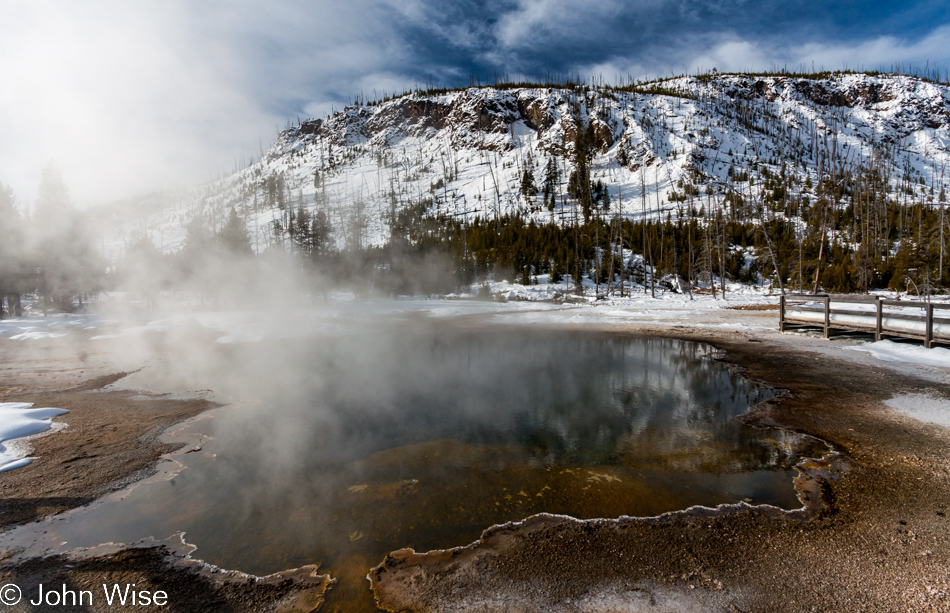
It was near here at Emerald Pool on the Black Sand Basin a year and a day ago that I experienced one of those rare epiphanies that have the power to alter our sense of perception. Standing on the boardwalk, two eagles were flying overhead as Caroline and I were sharing a cup of tea from our thermos. The day was significantly colder but we were enjoying a similar blue sky as we are today, when it struck me. Bill Gates, with billions of dollars, could not enjoy this moment any more than I could; all of his money could not buy more wow and awe. A wealthy man cannot buy or own a corner of our National Park for his personal exclusive view and entertainment. No matter how rich or poor, we all have the opportunity to see this world around us with the most extraordinary nature and wildlife that could possibly be created by man in a thousand lifetimes. Back then, like now, the Black Sand Basin was all ours. Not another soul far and wide. Today, I am rich beyond belief once more.
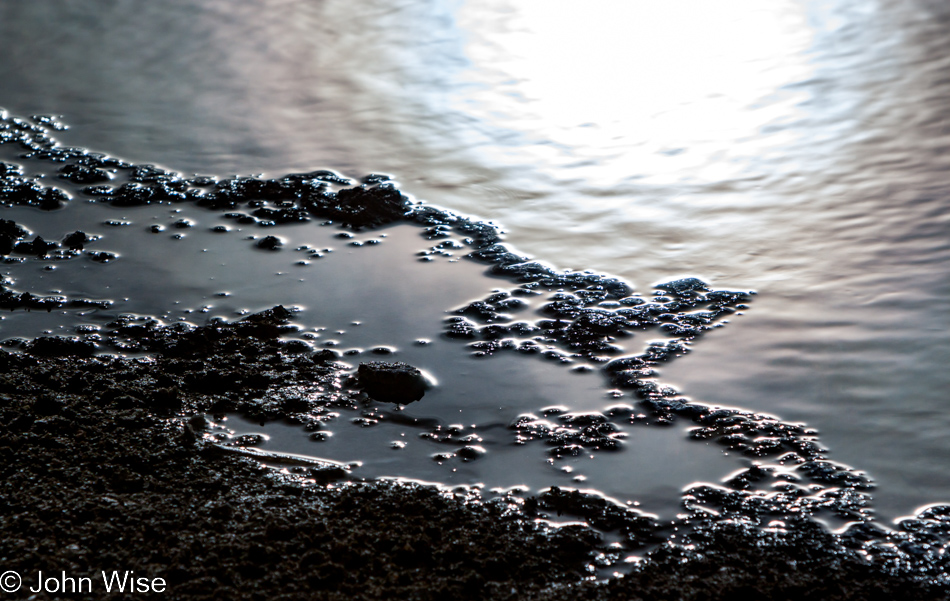
My kingly idea reflects in my memories; again I am allowed to covet this corner of all that I see. But this is more than a single image and a solitary sense. There is a totality of environmental experience that enwraps you and makes this real. Eyes squinting against the bright sun reflecting off water and snow. The cold turns the ends of our sniffling noses red and mandates us to cover our warm parts that have found the chill wind. Water laps at the thin shore with tiny ripples as dainty unseen birds chirp in the trees around us. Snow crunches underfoot as leaves and twigs bristle with the disturbance from a bird, small animal, or wind, of which in particular we do not know. Gas escaping a fumarole hisses, sending us a gift that stimulates our sense of smell. A foot slips on the ice, a magpie flutters to a wobbly landing, while sun rays are reflected in rising steam that momentarily warms our exposed frosty faces. We stand here on the edge of our knowledge in an endeavor to comprehend the magnitude and depth of what on the surface looks so simple, giving these extraordinary moments adequate time to find meaning and become memories that will fatten our wallet of experience.
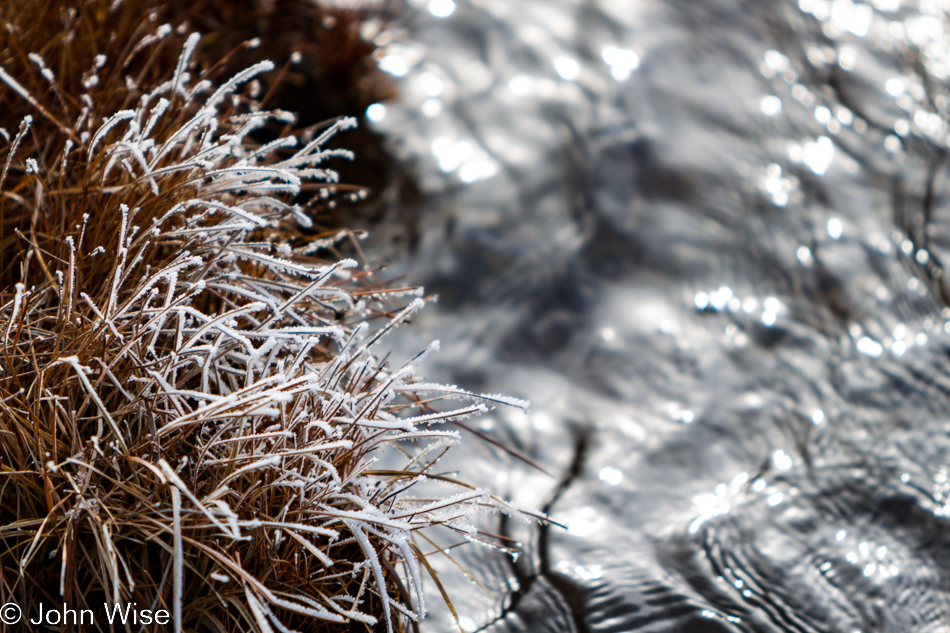
In some ways, our life is much like the frost, grass, and water we are staring at. From our fast-moving lives (the water), steam (our imagination) clings to this stream-side brown dormant grass (our routine) in the form of ice (our thoughts). A slight warming of the air (maturity) and the ice will fall back into the water; some will evaporate, and some will nourish the grass. Spring will return to find the frost gone, the grass green again, the air warmer, and the stream will have moved on. Another season and the cycle will repeat until the grass dies off and the water takes a different path.
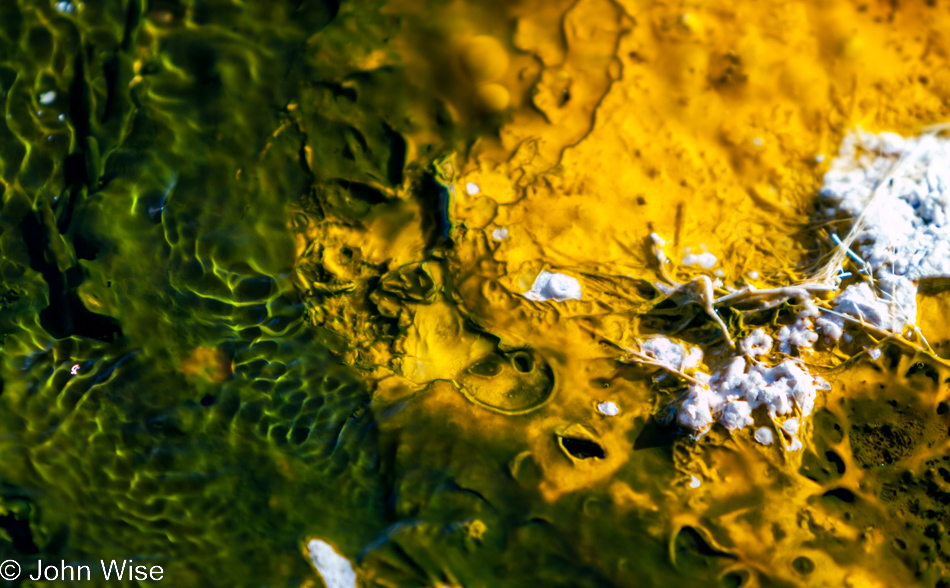
Just below the surface of the water, a complex community of competing interests is vying for all that it can take from its environment to ensure survival. Green against yellow and an intruding white growth attacking from above, some complain about the cold and others the rising temperatures. The water and the inner workings of the earth below are the ultimate arbiters as the rolling dice of time tumble forward, influencing the chances of who or what will be a winner. But beyond this feud between green and yellow and the occasional intrusions of white, what if it were all for nothing? If the forces of the volcano below, which is indiscriminate, were to unleash its wrath and vaporize all above it that was, would green and yellow maybe have wished to have taken another moment to enjoy the gaze of those who marveled at the beauty represented by the contrasting colors?
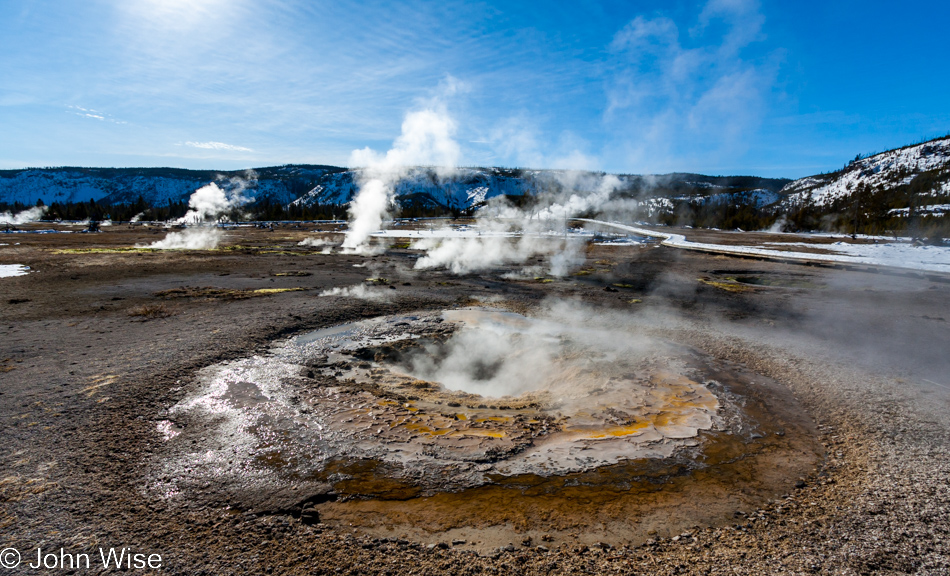
We shortcut up the road, grab a quick lunch, find our driver, and are soon underway on the Firehole Basin tour we scheduled. The first stop is Biscuit Basin on the Grand Loop. The place is overrun. Too many snowmobiles, too many in the herd of man, some sleepy bison off the boardwalk. We try not to see too much as we quickly hoof it over the ice to loop the Basin; we were supposed to hike out here the next morning and don’t want to spoil ourselves by seeing it all at once. Anyway, we are too excited about what comes next.
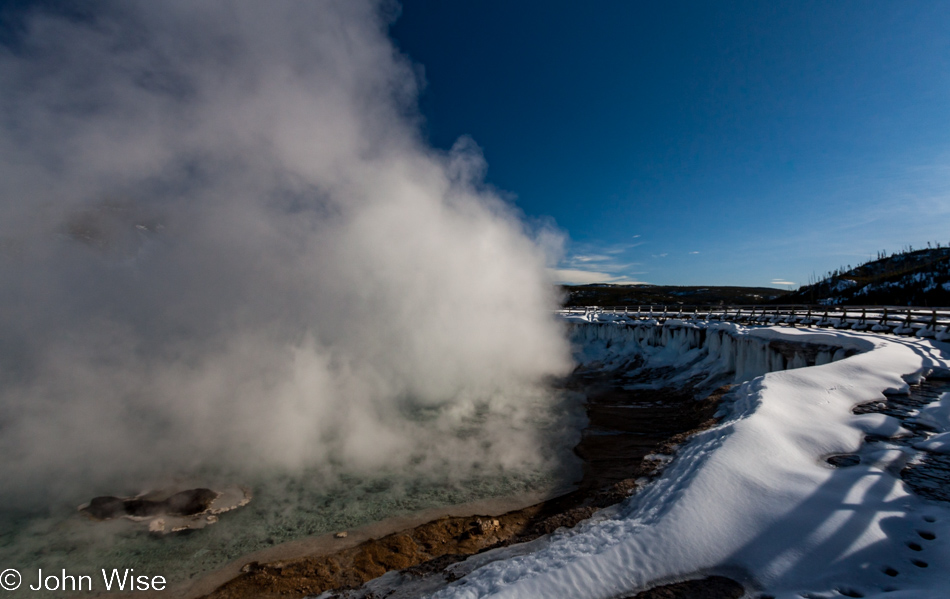
Midway Geyser Basin. With newfound excitement, we are transformed into children awaiting Christmas day. The sky is blue, and we are going to visit the Grand Prismatic Hot Spring. First, we must pass the gatekeeper, Excelsior Geyser. In the cold of winter, we would have never guessed that we might see more of the Excelsior pool than at any other time we have visited. A curtain of ice stands as a backdrop to the geyser whose four thousand gallons-a-minute waters spill out the crater to cascade downhill into the Firehole river we just crossed. The sight of the stained and rutted hillside, steaming rushing waters, and the dark blue river of the Firehole running alongside this geyser basin framed in snow-covered trees and meadows would be enough to satisfy even the weakest of imaginations, but we know there is more.
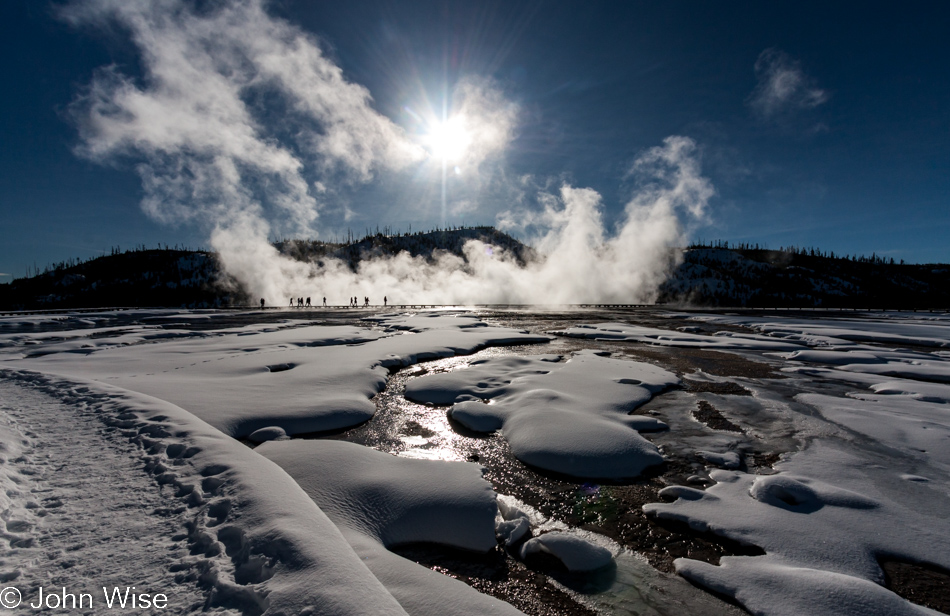
Off in the distance, hidden behind its shroud of steam, is the massive spring of all springs – Grand Prismatic. Our approach is slow and deliberate. The universe orbiting the colorful giant is immense and deserving in its own right to be taken in with quiet deliberation. On the left, we are circling Excelsior, captivated by the clear boiling waters below and the frozen waterfalls grasping fast to the cliffside wall of what was once the world’s largest geyser. On the right, tufts of snow cut by hot waters act as islands in a shallow sea of runoff that issues forth from Grand Prismatic Spring.
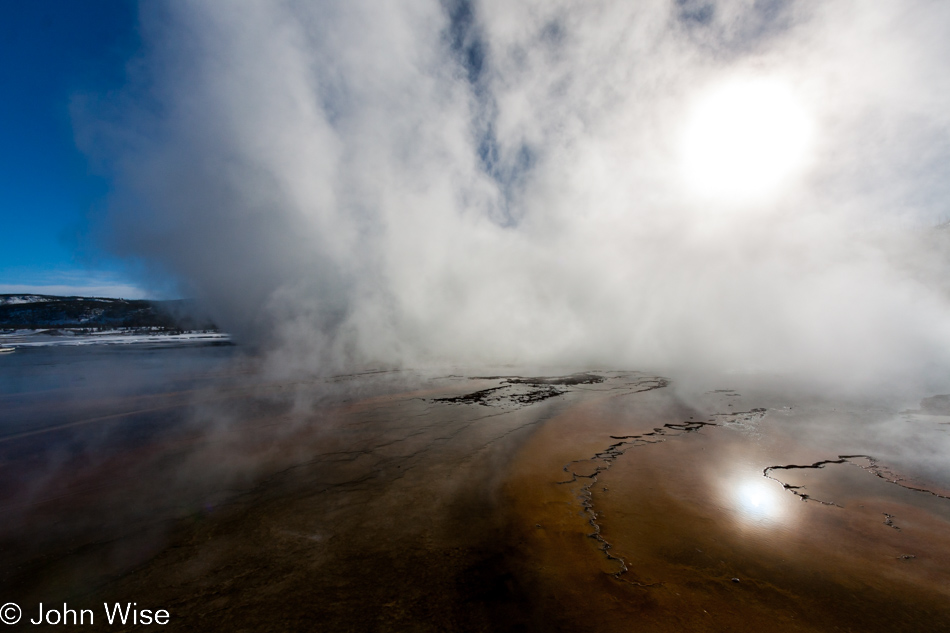
Here we are, in the shadow of greatness. It matters not one bit that its cache of colors is muted by the afternoon sun and a veil of steam; we know precisely what lies just beyond our view. Hints of its majesty are seen everywhere. Cracked earth, etched surfaces, and reflective, still waters mirror the sun that has found a gap in the cloak of obscurity. Just beyond is a pool of cerulean blue surrounded by the full spectrum of green rung by a terrace of graduating yellow and orange before reaching shades of red, cooling to browns. Grand Prismatic is a stunning sight, indeed. If you should be here on a day when all you witness is a screen of steam hiding its stunning beauty, you must return time and again until the day it seers in grandeur into your mind’s eye. Then, on subsequent visits, you too may revel at what lies above on the hillside with the power to draw out that inner child anticipating greatness unimaginable to a fresh young mind.
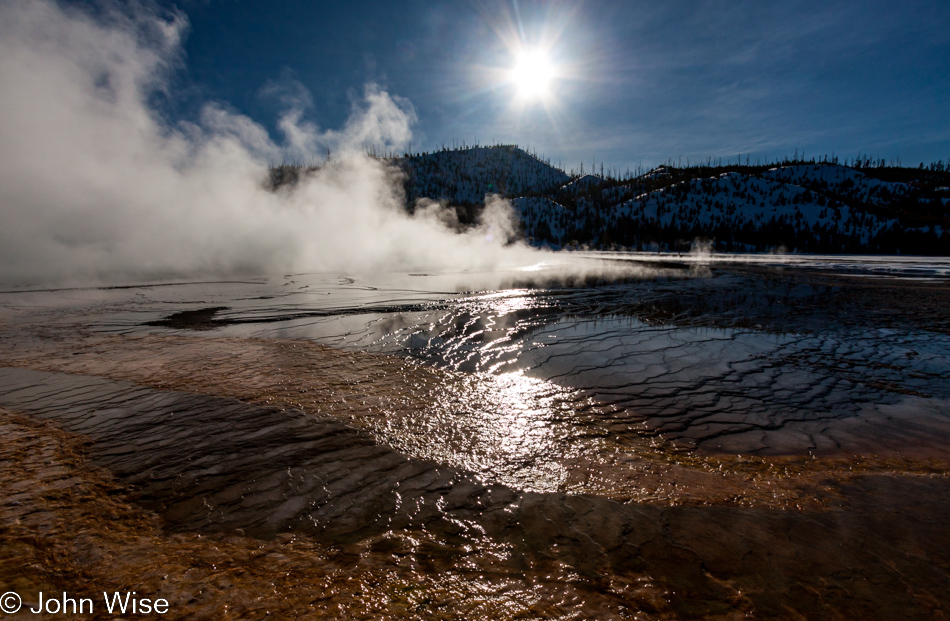
Around the bend, another perspective. Trying to glean a peek below and in between, we hunger for that glimpse of the profound. Still, we tingle with delight at the chance to be here. The sky is almost azure, with a few wispy clouds on the horizon and overhead, making for a dramatic canopy complementing the scene below. I am reminded of the Navajo Blessing Way as we walk in beauty, with beauty before us, beauty behind us, beauty above us, and beauty below.
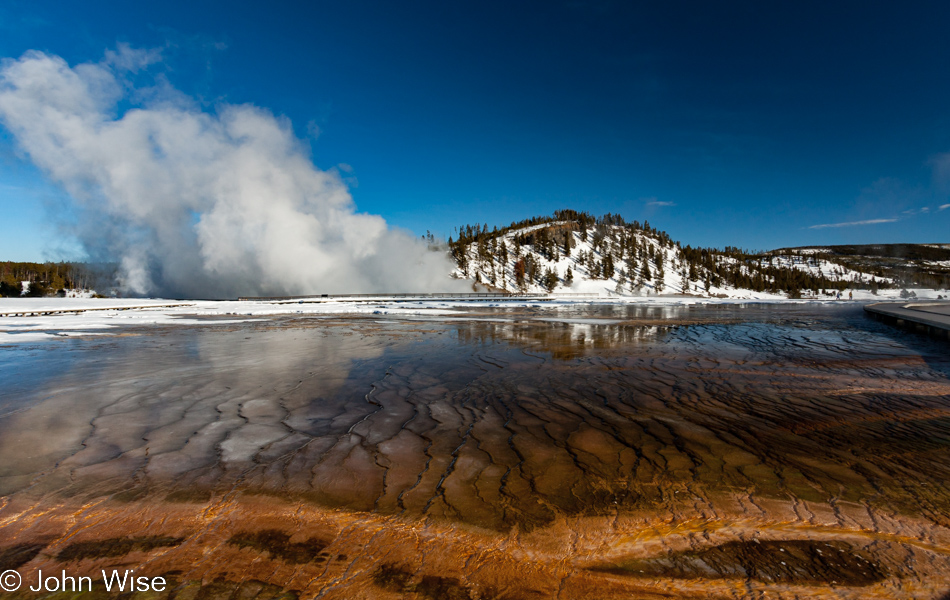
Turn around, look above, look down, look side to side. Is there anywhere less amazing than the inch of visible presence occupying the space next to the inch that is its neighbor? Is this not a giant interconnectedness that is binding everything within its hold from above and below into one immense spectacle of beauty? And if all that surrounds one is of this exceptional glorious radiance that comes together to create the whole, and you should be the one in the center of it all, then are you, too, not an integral facet that defines the landscape? Are you and your inherent ability to be and to see, to sense, and to learn, to exist within the kaleidoscope of unfolding resplendence not just as important an element of nature that life has offered you a role in?
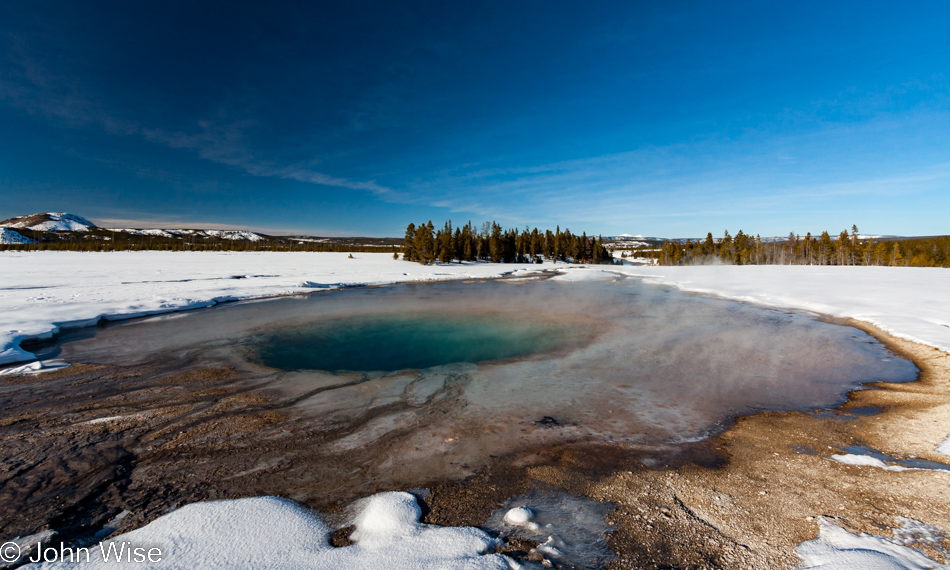
Turquoise Pool is the last thermal feature we gaze upon during our stop here at Midway Geyser Basin. I am content. I do not care about what else we should do with the rest of the day; I am satisfied. I am floating on the high of having been there and done that. There are places within Yellowstone that will brand an awareness in you that reawakens when you are bestowed with a subsequent visit, where when you look at the sum of the parts, you know you are looking at perfection. This basin is one such place for me.
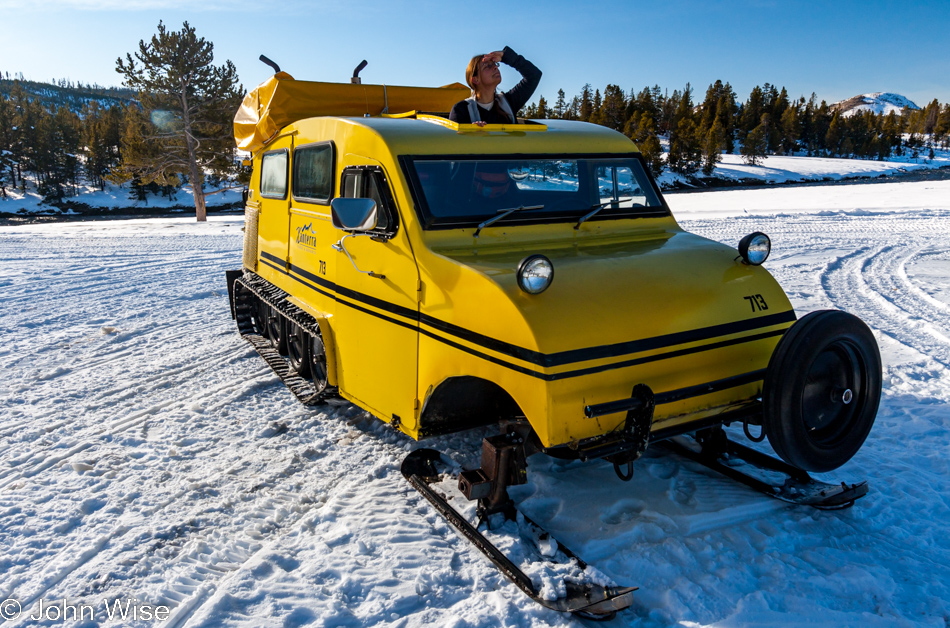
From whence we came, it matters no more than where we may go. Seek to find us a worthy location so I may explore further the machinations of a mind rebelling against the merely superficial on my quest to meditate on the state of modernity. Rollover to crush and assist the slow death of my love for the cities I have grown musty in. The yoke of conformity becomes a noose, a blindfold, and a shackle. Cannot the masses see their freedom has all the range of their remote control? Then again, I can count my blessing that the situation is as it is, for would I, could I, truly appreciate this vehicle about to deliver us to our next stop if it were seating one hundred and I was to be joined by throngs of even like-minded thinkers? And would I still enjoy the moment if there were forty, fifty, or sixty such coaches lined up parking here as five or six thousand like-minded souls went exploring the boardwalks of the Midway Geyser Basin, seeking their own form of enlightenment?
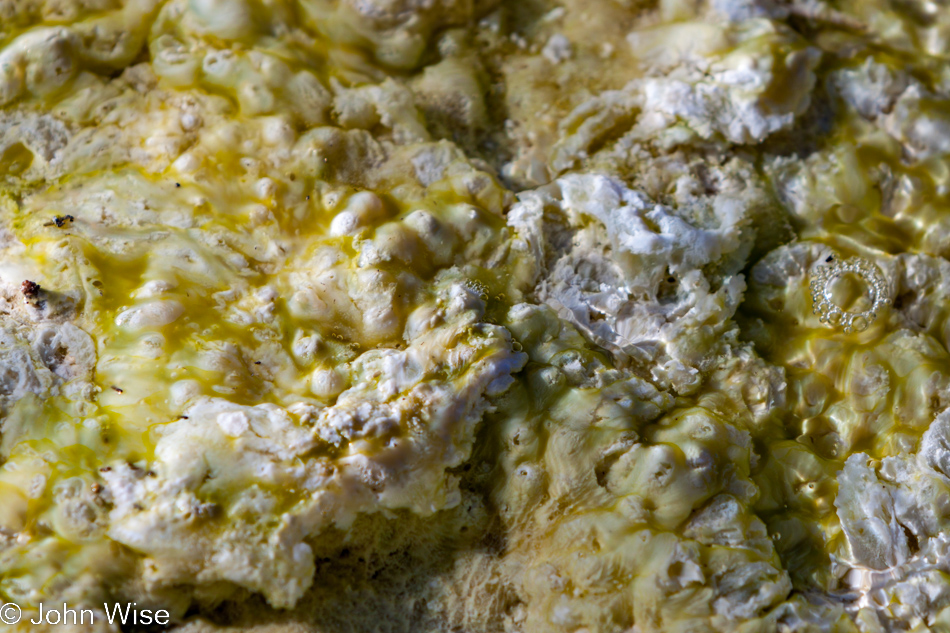
How many forms of the unknown exist in this diverse corner of Wyoming? How many hours, days, weeks, or lifetimes must be spent looking into the corners and below the surface of things before one begins to feel a sense of knowing the infinite this place may hold? My eyes six feet above the surface see mottled yellow and white blobby stuff next to the boardwalk. On hands and knees, I’m looking at buttery slime frosting bubbling over coral reef-like growths of bone marrow slathered with plaque, draining an infected sore next to ripe pimples ready to erupt. And yes, I do find this thermophilic bed just as lyrical and beautiful as the full symphony of a landscape that is performing all around me.
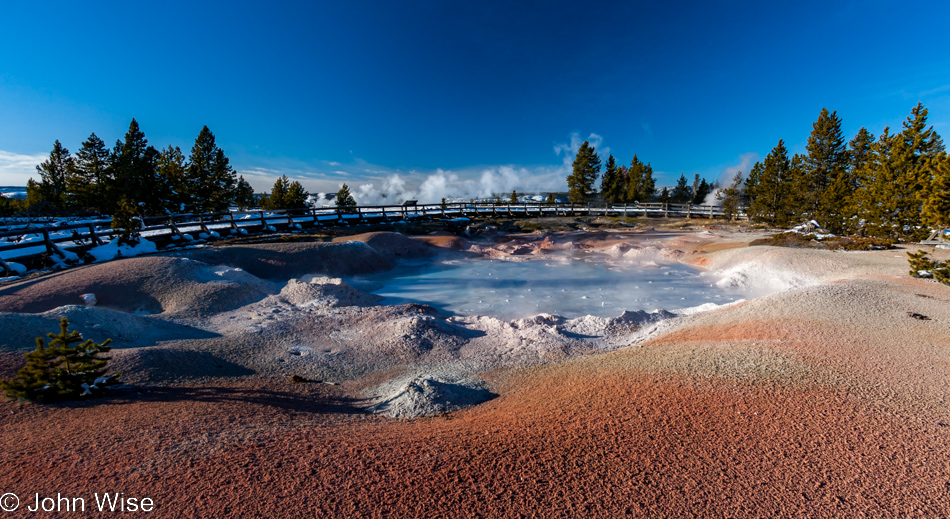
It’s the beach kids; run for the water. Wait, this isn’t a pool, a sea, or a lake; it’s a transformative mud bath. Who knew this resort had a deluxe outdoor spa? I think I’ll make myself cozy by this heat cone where I can mist my face prior to the attendant slathering me with healing mud and wrapping my tired bones in hand-made organic mineral-laden bison wool woven sheets. Ahh, the good life. Music, sunshine, and the beach all in one place. Am I living or what?
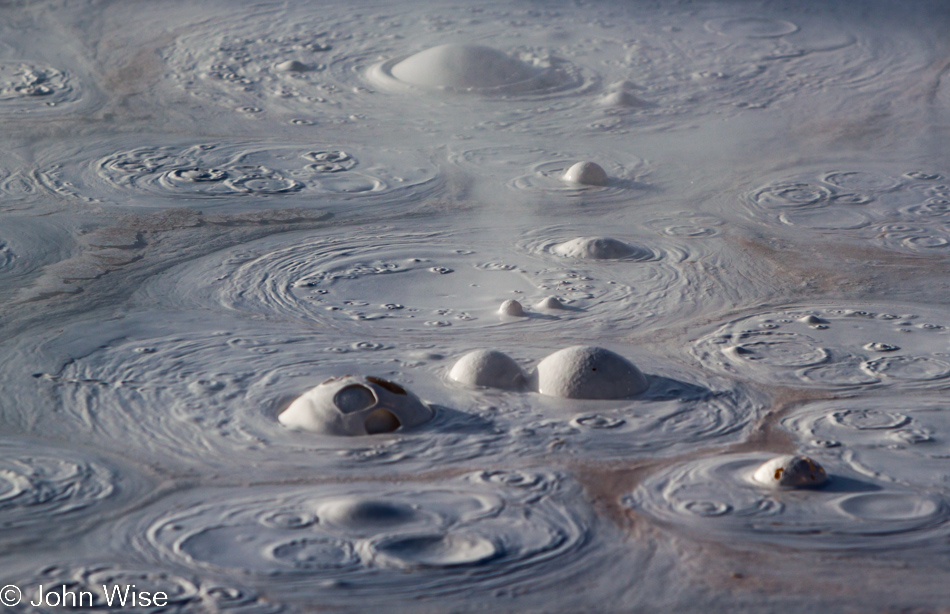
Suppose I should mention that we have been delivered by the Yellow Bombardier to Fountain Paint Pots on the Lower Geyser Basin. Turn your head and listen; no matter the direction, everywhere is sound. Maybe more than any other basin, the Fountain Paint Pots is a loud, boiling cauldron of roiling charm. Like the famous advertising campaign that accompanied a particular potato chip that bet you couldn’t eat just one, I dare you to only watch one bubble of mud pop with a resounding ‘bloop.’ One bloop leads to another; soon, you have a concert of bloopage happening, and your toe starts tapping. Have I forgotten to mention the hypnotizing concentric patterns that roll out of the boiling mud that have the ability to trap you with their wicked powers of entrancement?
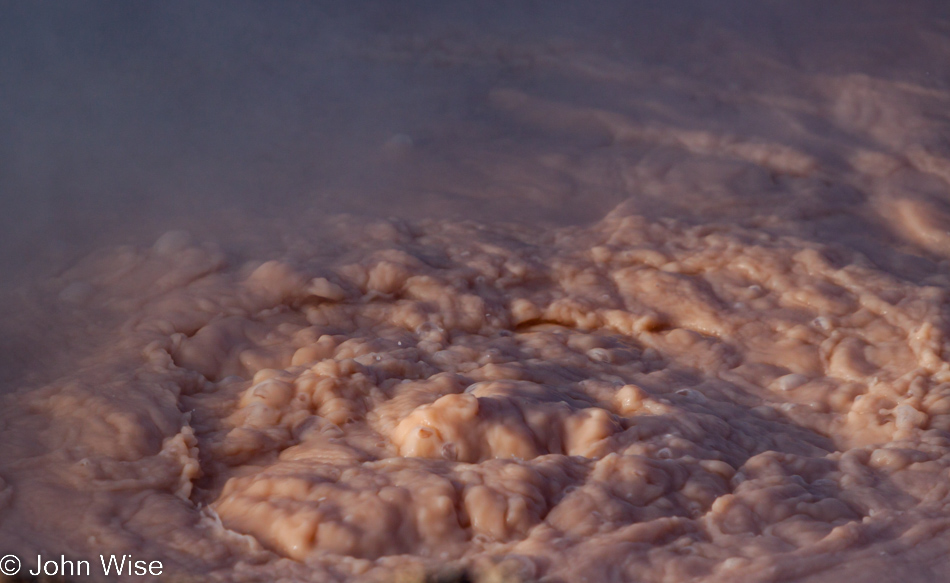
Forget the boiling mud; say hello to boiling, milky red water. I know, by now, you must be asking, “Is any of this stuff real, or are these outtake stills from early development renderings of the planet Pandora from James Cameron’s blockbuster Avatar?” Sorry, mate, this is 100% pure, all-natural, unrefined, non-GMO, trans-fat-free nature, and not the kind sweetened with corn syrup, either. This is like looking up at the clouds and spotting cumulus creatures taking form in changing shapes; I think I can see Mr. Potato Head lying on his back.
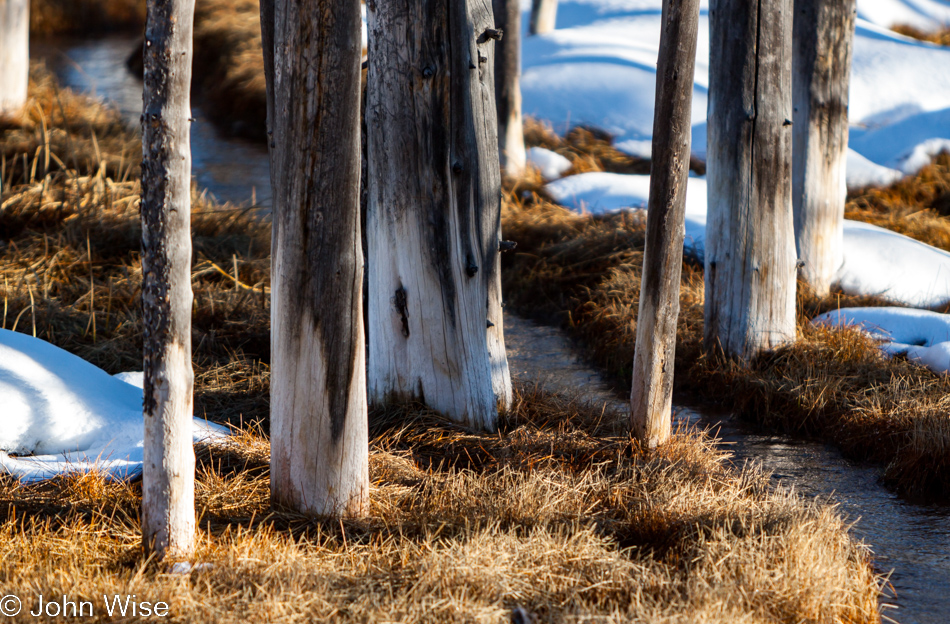
My grandfather once told me, “One can never have too many Bobby Socks trees in a blog posting.” Sage advice if you ask me. We are finished exploring the Fountain Paint Pots. There is one more stop we’ll make for the sake of one of the other travelers with us who has not yet been to the Black Sand Basin. I will wait river-side, chatting with a family of three who delivered themselves to the basin on snowshoes as the others make a mad dash to circumnavigate the geysers and hot springs. I have seen too much; my cake has two feet of frosting on it, and another inch matters, not a lick. But is the day over? Heck no, that means there will be more, like it or not.
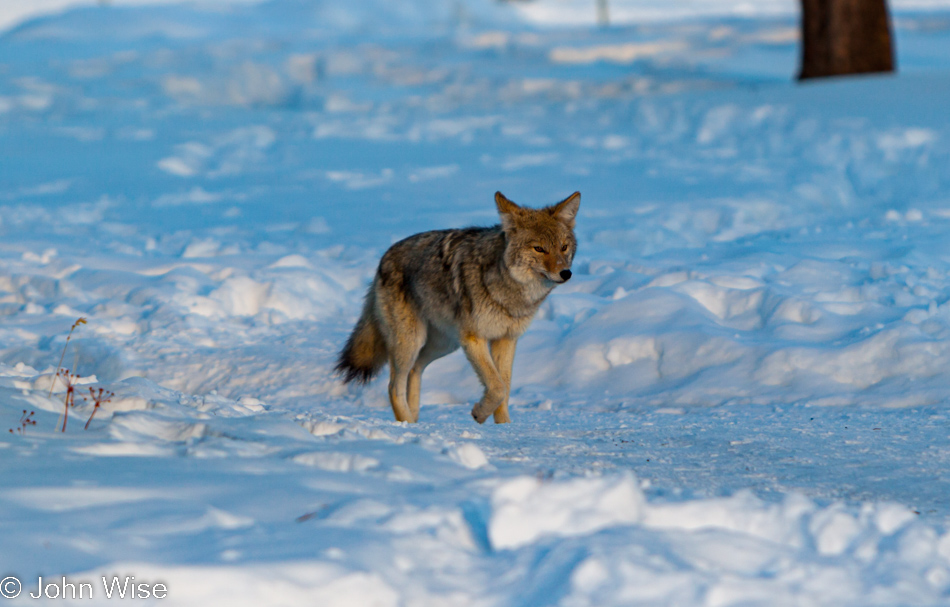
Back at the Snow Lodge, we scramble towards Old Faithful, where the visitor center also happens to be. Caroline digs through a snowbank, looking for a snowflake. She must find a keen example of a fallen ice crystal to draw in her Junior Ranger guide. She is soon to finish the hard work invested in her attempt to qualify for the honor of donning a Yellowstone Junior Ranger Snow Patch and badge. Magnifying glass and pencil stowed, we are quickly underfoot once more, but we are not alone in our quick pace. A coyote passes behind some trees to emerge on a well-worn snow path to our right and casually saunters by like this was just about the most normal thing for him or her to be doing shortly before dinner time. The coyote eyed us wearily while we eyed how snugly his winter coat looked and, at the same time, wished not to see a growling, hungry muzzle aiming for our tender parts.
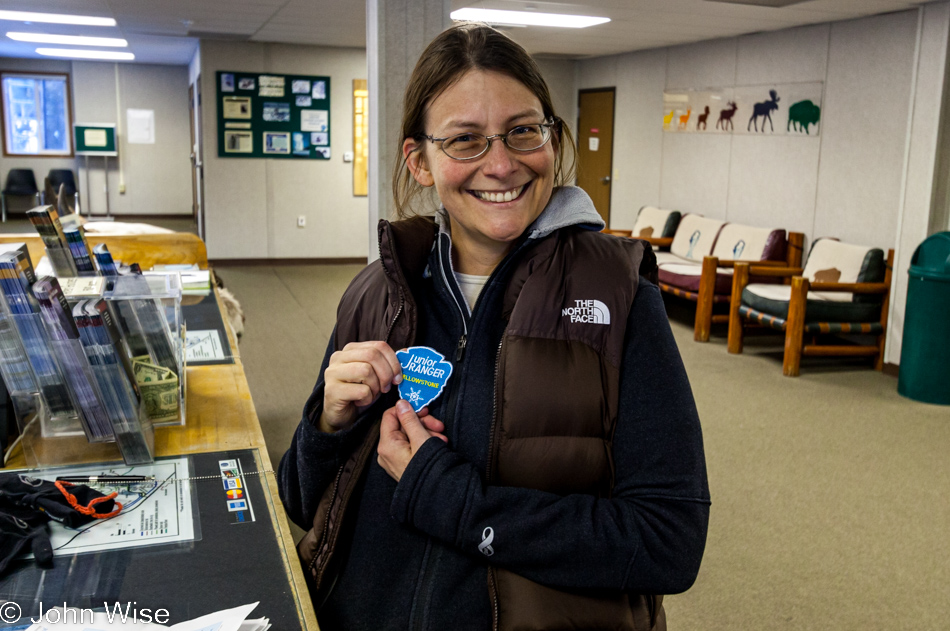
One last test: measure the wind chill. Park Ranger Rita Garcia examines Caroline’s handiwork at filling in correct answers; she inspects the hand-drawn snowflake, confirms snow temperatures, and reads her writing of a short narrative of our trip so far – you can bet Caroline didn’t write at length; she would probably still be at the visitors center two weeks later waiting for Ranger Rita to finish if she had been writing like her windbag husband. To announce that the excited, proud, beaming face above qualified for her first Junior Ranger badge shouldn’t be necessary as you can see for yourselves that she is indeed in possession of one of those coveted rare Snow Patches. Now she wants patches from all other National Park that offer them.
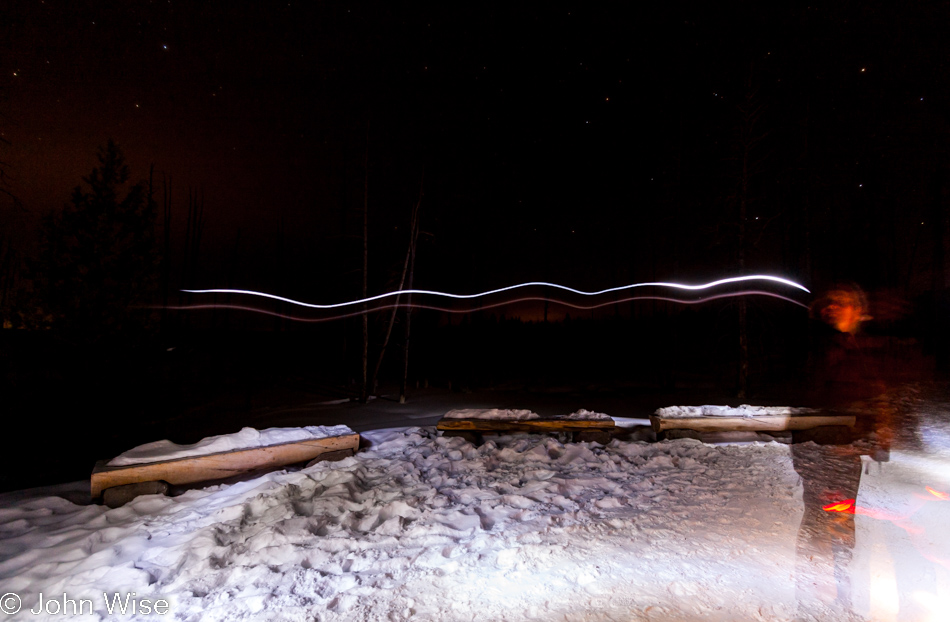
If it is dark, it must be tour time. Andrew is back with souvenir thermos cups and hot chocolate as we load into the Bombardier for an evening tour of Steam & Stars. A return visit to the Fountain Paint Pots, this time without the light of day. This is a listening tour as much as it is a chance to look up to watch the Milky Way sparkle above on this clear night. We walk, we listen. Andrew tells the group what we are listening to. The others are standing and trying to watch the non-stop eruption of Clepsydra Geyser while I lag behind near the almost dormant Jet Geyser, squatting with my camera mounted low on the tripod, trying in vain to capture anything of the night. Nothing. But not for long. About the third or fourth attempt, I hear the scurrying patter of feet not twenty feet away from me. Fighting back panic, I turn on my flashlight and, in a frenzy scan the ground and boardwalk, trying to find eyes glowing back at me so I could identify the object of terror, hoping it was a night squirrel or something small like that. I hesitated on telling anyone else on the tour because I knew they would pick up on the near-hysterical fear pounding through my veins when Andrew, oh, so innocuously tells the group ahead of a coyote crossing to the left. Relieved that the ghosts of the Nez Perce weren’t here for retribution my heart calms, just as Jet Geyser starts a small eruption – wow, the luck of it all. Back at the Snow Lodge, we are joined by Joanne, Rick, and Kim, who were also on the Stars & Steam tour for dessert and some wonderful conversation between a bunch of strangers. It’s late, approaching eleven, as I finish scribbling a few notes so I won’t forget the more important details of the day. Time to put the pen down and make our way over the snow back to our cabin.

